
- How to get to Palau
- Palau Immigration Requirements
- Natural Wonders

World’s First Shark Sanctuary
National marine sanctuary, palau pledge, ol’au palau, cultural immersion.
- Flight Schedule
- Book Flight
- Group Booking
- Flight Promo
- Our Values & Philosophy
Joining Hands for a Sustainable Paradise
Welcome to Palau, the paradise that's leading the way in sustainable tourism! On December 7, 2017, Palau became the world's first country to pioneer an immigration policy that champions the preservation of its rich culture and breathtaking natural environment. This groundbreaking initiative, known as the Palau Pledge, is the first step towards responsible and respectful tourism.
What is the Palau Pledge?
The Palau Pledge is a passport-like declaration that every visitor to our beloved island must sign upon arrival. It's more than just a document; it's a commitment. By signing the pledge, tourists promise to respect our ecological and cultural heritage during their stay. They commit to preserving the land, not taking what isn't freely given, and refraining from causing harm without self-defense. The Pledge emphasizes leaving only footprints that will be washed away by the ocean – a commitment that ensures the preservation of Palau's beauty for future generations. To make it even more special, local children played a significant role in drafting the declaration.
Who Are the Advocates of the Palau Pledge?
Meet the visionary founders of The Palau Legacy Project, including Nicolle, Jennifer Gibbons, Laura Clarke, and Nanae Singeo. They are the driving force behind the Palau Pledge, working tirelessly to create a sustainable future for Palau. Over 22,000 individuals have already pledged their support, and the online awareness campaign has reached over 1.6 billion people worldwide.
With the support of the President and the First Lady of Palau, The Palau Legacy Project is changing the way both visitors and local Palauans treat our island. One of the remarkable aspects of this campaign is an in-flight video shown on every flight landing in Palau, which serves as a powerful reminder of the responsibilities we all share.
Why the Palau Pledge?
The Palau Pledge is a response to the urgent need for eco-responsible tourism. The tourism industry is responsible for approximately 8% of global greenhouse gas emissions, surpassing even the construction sector. With the rise in global travel and consumption, it's vital to adopt strict regulations to mitigate the environmental impact. Palau's innovative management of visitors sets an inspiring example for the world to follow.
Palau: A Fragile Paradise
Nestled in the Western Pacific, Palau is a treasure trove of natural beauty. In 2015, Palau created the world's sixth-largest marine sanctuary, protecting 80% of its maritime territory. Despite the challenges of a growing number of visitors (almost 160,000 annually), which far surpasses our population of 20,000, Palau Legacy Project recognized the need to protect our delicate environment.
The challenge was to strike a balance between promoting tourism and preserving our unique Micronesian culture and environment.
Join the International Movement for the Palau Pledge
The Palau Pledge has garnered international support from influencers like actor and activist Leonardo DiCaprio, former US Secretary of State John Kerry, and renowned conservationist Sylvia Earle. As the third smallest country in the world by population, Palau now boasts the largest percentage of protected ocean globally.
The Palau Legacy Project's mission extends beyond the Palau Pledge. Phase 2 focuses on integrating conservation into the national curriculum and initiating an accreditation scheme for local businesses that align with the principles of the Pledge. The project also involves educational field trips to demonstrate the impact of human activity on our local ecology, inspiring teachers to emphasize the importance of conserving the natural environment.
Take Action with Soultrips
As responsible travelers and advocates for sustainable tourism, we invite you to support the Palau Pledge in action. Choose Soultrips and Palaun tour operators who share the values and mission of the Palau Pledge. Together, we can explore Palau mindfully and be stewards of this paradise for generations to come. Your journey begins with a commitment to respect and protect Palau's vibrant culture and natural beauty, leaving only the footprints that will be washed away by the ocean. It's more than a pledge; it's a promise for a sustainable future.
Explore this extraordinary landscape and immerse yourself in a living testament to nature's wonders with Soultrips.
Discover more.

All our trips are designed with sustainability and your well-being in mind. Explore with a conscience and leave nothing but footprints of inspiration.
Experiences

National Geographic content straight to your inbox—sign up for our popular newsletters here

Palau Becomes First Country to Require 'Eco-Pledge' Upon Arrival
As tourism to this island nation increases, the government has instituted a mandatory pledge for tourists—in the form of a passport stamp.
The island nation of Palau has taken a bold step in a new direction towards conservation: requiring every incoming visitor to sign a stamped pledge in their passports to be good environmental stewards for the duration of their stay.
A Unique Kind of Paradise
Located in the western Pacific Ocean, the Republic of Palau is a collection of islands that is as beautiful as it is diverse. From coral atolls like Kayangel, to the tiny Rock Islands made entirely of limestone, to the magical underwater world of Jellyfish Lake, visitors to Palau get to experience many different definitions of paradise.
Like many other island nations in the Pacific, Palau relies on tourism as a primary driver of its economy. Each year, throngs of tourists come from all over the world to explore Palau. In recent years, the average number of visitors to Palau’s shores are almost seven times greater than the local population. However, as those numbers continue to grow, problems arise. Numerous examples of tourists disrespecting the natural and living ecosystems—largely out of ignorance—have been cited in the recent past.
The Palau Pledge
A portion of the the Palau Pledge, which is written as a poem, reads, "I vow to tread lightly, act kindly and explore mindfully."
On the evening of December 7th, when the routine flight from Guam landed in Palau, tourists and visitors were greeted to a much different arrival process than they were expecting. Instead of the typical entry stamp in their passports, they received a stamped pledge—resembling a five-stanza poem—with a set of vows to the youth of Palau. To enter the country, everyone must sign off on promises to “tread lightly, act kindly, and explore mindfully.”
In addition to the stamp itself, the Palau Pledge initiative comes with a mandatory in-flight video that educates all incoming visitors about their responsibility to be environmentally responsible, along with a checklist of dos and don’ts that is distributed upon arrival. To ensure that the Palau Pledge is more than just a superficial effort, there are national policies in place to strengthen the enforcement of environmental protection laws, including increased policing and reporting efforts.
Children of Palau, I take this pledge, as your guest, to preserve and protect your beautiful and unique island home. I vow to tread lightly, act kindly and explore mindfully. Palau Pledge , Republic of Palau, Immigration
At its core, this initiative aims to ensure that the youth of Palau inherit the same pristine natural resources that have existed in the country for countless generations. It also highlights the importance of striking a balance between development and conservation. President Tommy Remengesau Jr. is one of the leading voices behind this movement of environmental stewardship, both in Palau and worldwide. He believes that “It is important that our valued guests understand the values we Palauans place on our natural environment and its resources that have sustained us for millennia.”
Ancient Wisdom for the Modern Day
A foundational element within many conservation efforts in Palau is the concept of bul or fishing ban. This word represents a system of traditional Palauan resource management, used primarily by village chiefs in ancient times to manage fish stock. When the village observed a decline in the number of fish off of their shores, they would issue a temporary halt—or bul—of all fishing activity to allow for the marine life to flourish and replenish.
- Nat Geo Expeditions
Today, many locals feel that the Palau Pledge is a small but significant step towards shifting tourists’ attitudes about the value of the country’s natural and living resources. Though it is too early to tell, many are hopeful that the Palau Pledge can also serve as a tool to galvanize the local community towards the same vision of conservation—one that transcends generations, village lines, and political agendas.
Dan Lin is the Director of the Pacific Storytellers Cooperative at PREL, based in Hawaii. You can follow him on Instagram @dan_lin_photos or Facebook @danlinphotography .
Summer Flash Sale – Up to $20 off!
Related topics.
- SUSTAINABLE TOURISM
- SUSTAINABILITY
- ENVIRONMENT AND CONSERVATION
- HABITAT PRESERVATION
You May Also Like

Looking for a truly remote, off-the-grid adventure? Try Panama.

6 eco-conscious alpine resorts around the world
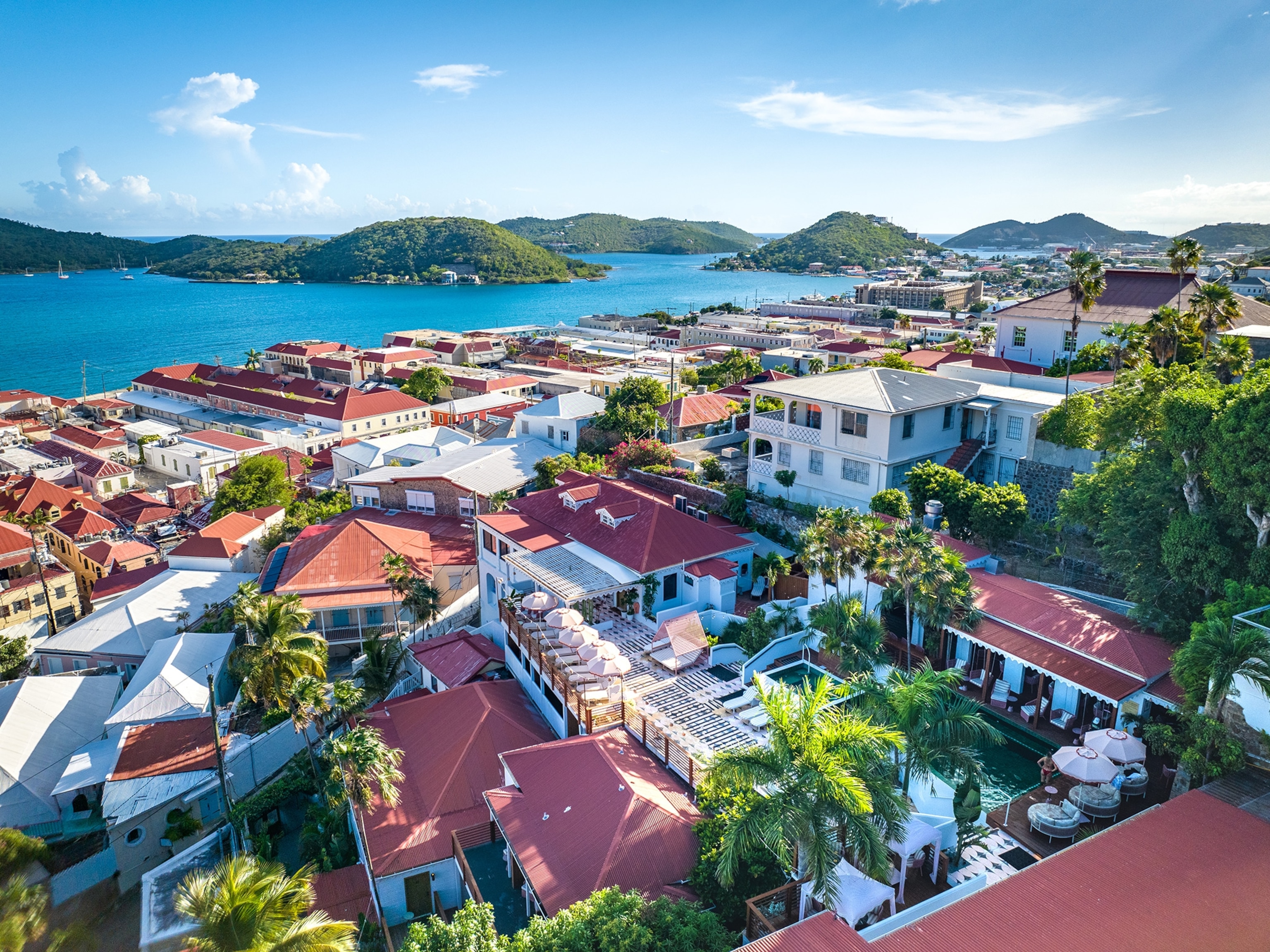
Here are the hotels we love for 2024

Bears, wolves and rewilding in Romania's Southern Carpathian mountains

To see Malaysia’s elusive wildlife, take a walk in the trees
- Environment
- History & Culture
History & Culture
- Mind, Body, Wonder
- Paid Content
- Terms of Use
- Privacy Policy
- Your US State Privacy Rights
- Children's Online Privacy Policy
- Interest-Based Ads
- About Nielsen Measurement
- Do Not Sell or Share My Personal Information
- Nat Geo Home
- Attend a Live Event
- Book a Trip
- Inspire Your Kids
- Shop Nat Geo
- Visit the D.C. Museum
- Learn About Our Impact
- Support Our Mission
- Advertise With Us
- Customer Service
- Renew Subscription
- Manage Your Subscription
- Work at Nat Geo
- Sign Up for Our Newsletters
- Contribute to Protect the Planet
Copyright © 1996-2015 National Geographic Society Copyright © 2015-2024 National Geographic Partners, LLC. All rights reserved

The green pledge you have to sign in your passport upon arrival
While in most countries you get an entry stamp or a visa in your passport upon arrival, Visitors of the island of Palau visitors have to sign a pledge compromising in protecting the environment.
I was on my way to Palau and the famous Jellyfish Lake. Minutes before landing, the airline crew screened an inflight video about the country´s immigration policies and the Palau Pledge. In this short film, an animated giant monster arrived in Palau and damaged the biodiversity of the country. He didn´t do it in purpose, but simply didn´t realize it until local children came and explained the impact he can have on their country.
This is an analogy of what you and I do when we travel, as we unintentionally cause some damage to the environments we visit.
This video is shown on every single flight into Palau and introduces the Palau pledge: an agreement stamped in the passport, which each visitor has to sign and is made to ensure a traveler protects the landscapes of Palau.
Addressing to the children of Palau, the pledge is simple and eloquent. It expresses the importance of protecting the biodiversity of this country and be more conscious as travelers.
The pledge announces following:
Children of Palau, I take this Pledge, To preserve and protect your beautiful and unique island home. I vow to tread lightly, act kindly, and explore mindfully. I shall not take what is not given. I shall not harm what does not harm me. The only footprints I shall leave are those that will wash away. Palau Pledge
Read more: Jellyfish Lake Travel Guide
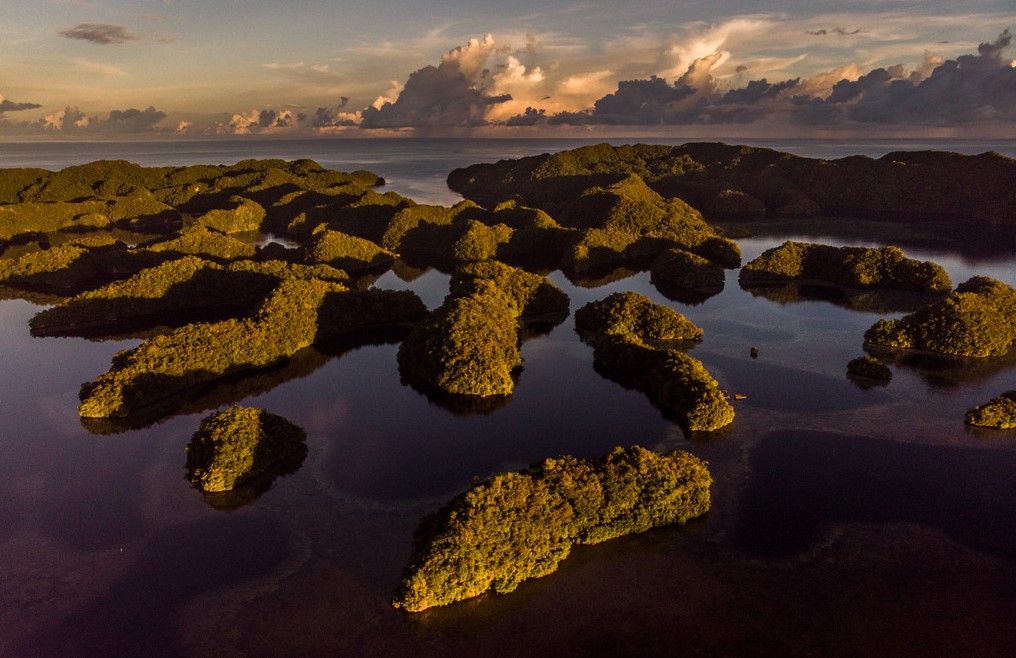
An era where tourism can be good and bad
Palau didn´t learn in a hard way on how damaging large-scale mass tourism could be for a country. There have been several cases like Barcelona or Venice, where locals have been protesting many times at the government to impose severe regulations for tourists. We all have seen the photos of overcrowded cities and damaged national heritage sites worldwide.
And although Palau can´t be compare to Angkor Wat, Paris or Venice, this tiny nation´s environment is extremely fragile – this is a country, where its number of visitors quadruples or quintuples its population and the consequences of mass tourism could be catastrophic for its natural ecosystems.
“Tourism is the lifeblood of countless communities and nations around the world, but it can also be a seemingly unstoppable destructive force”, said in an article David Griner, an editor for Adweek’s Magazine referring to the positive and negative impacts of tourism to a country.
Read more: Snorkeling and sea kayaking in Palau’s rock islands
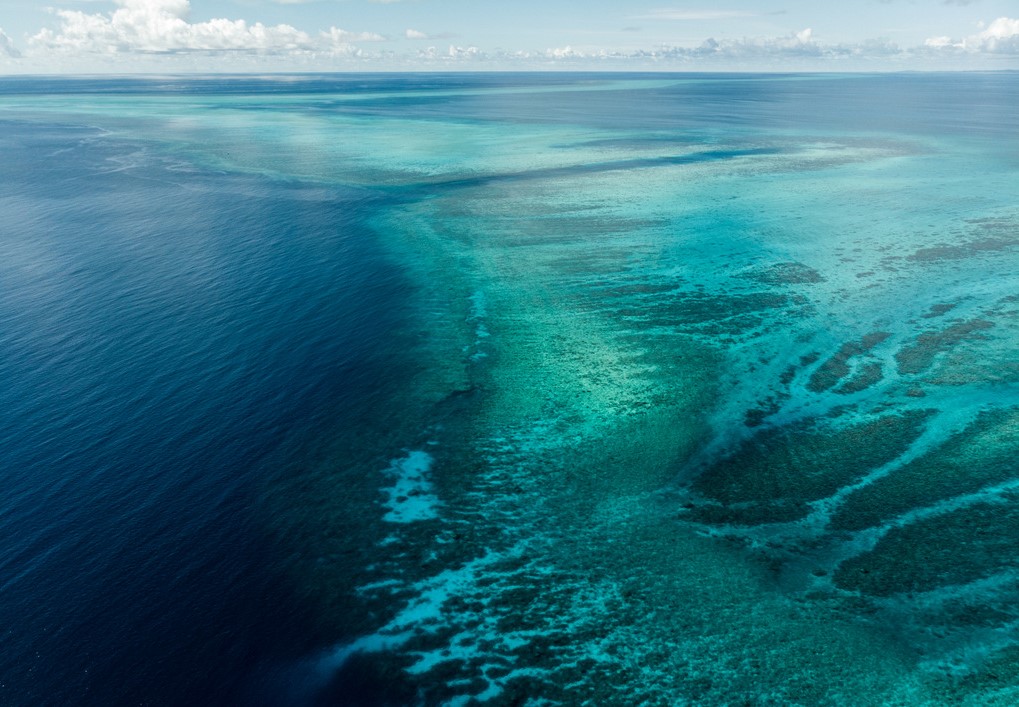
More than a marketing campaign
Palau´s new entry immigration stamp gave also a lot to talk about. Not only because it´s the first time a pledge has been written into a country’s immigration policies, but also for the large amount of publicity the campaign generated. The work done around the Palau Pledge campaign won several awards, including the D&AD Awards on creative work, and while some might say this was just a publicity stunt to boost the numbers in tourism, the government did apply new measures to increase the sustainability in the country.
In 2015 the parliament did their duty by turning most of its territorial waters into a marine sanctuary. Now they are a 500,000-square-kilometre natural reserve, in which commercial fishing and oil drilling is completely banned.
This pledge is now a way from Palau to present the world, how they are dealing with environmental issues, over tourism and sustainability.
“It is our responsibility to show our guests how to respect our island home, just as it is their duty to uphold the signed pledge when visiting”, stated the President of Palau, Tommy Remengesau.
Read more: Taking a dip at the Jellyfish Lake in Palau
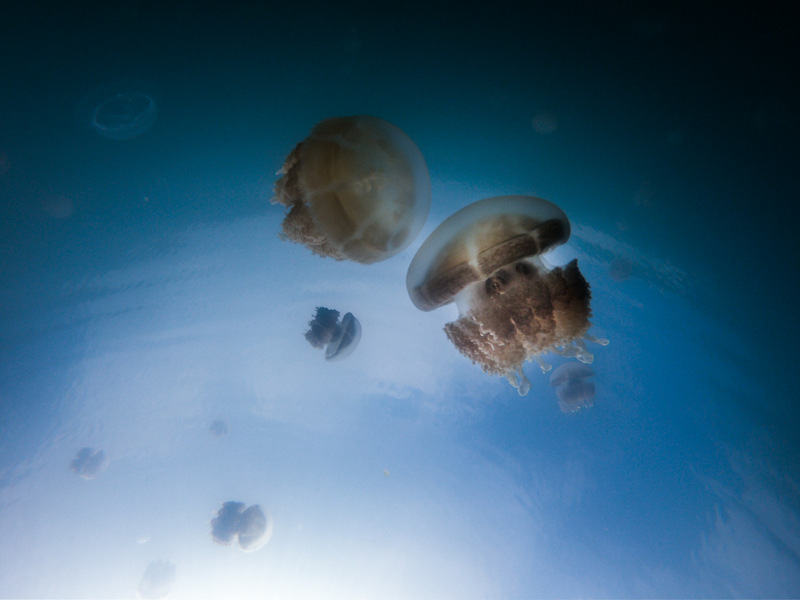
Sustainability is the new trend
After Palau´s campaign, other destinations decided to step up as well in reminding us to protect its natural landscapes and culture with respect. Now, visitors to New Zealand can agree to the “Tiaki Promise”, in which they pledge to be protectors of the environment during their trip and not long-ago Hawaii presented the very similar “Pono Pledge” too.
Signing a pledge doesn´t necessarily mean travelers will protect the environments of the places they visit, but I´m sure they will make them more conscious about the damages traveling does when someone visits a country.
Being sustainable for tourism doesn´t mean you have to stop visiting Venice, Barcelona or Paris, it simply means we have to learn in which aspects we are leaving a negative impact at the country and change this behavior.
YOU MIGHT ALSO LIKE
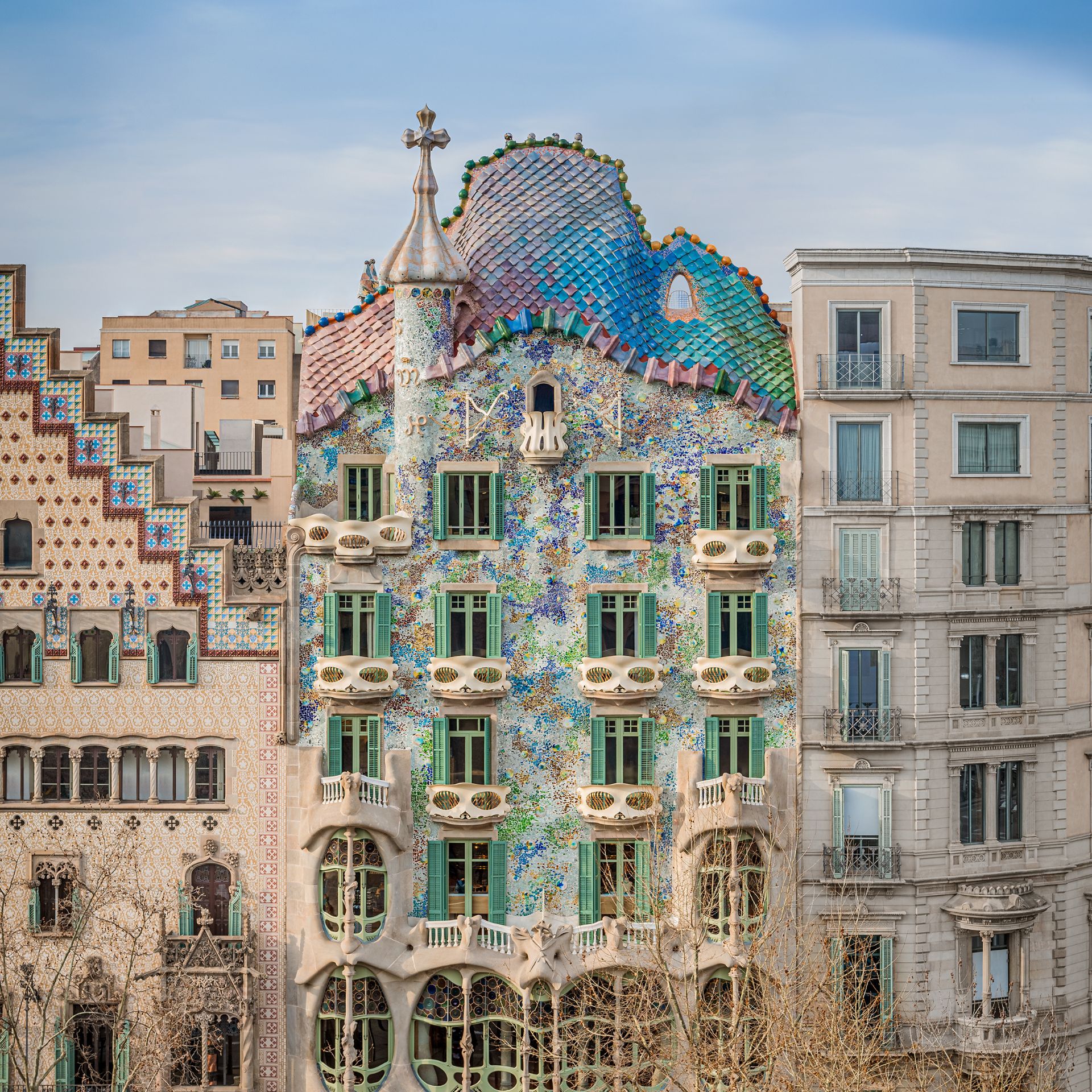
Is Gaudi’s Casa Batlló worth a visit?
- July 22, 2024
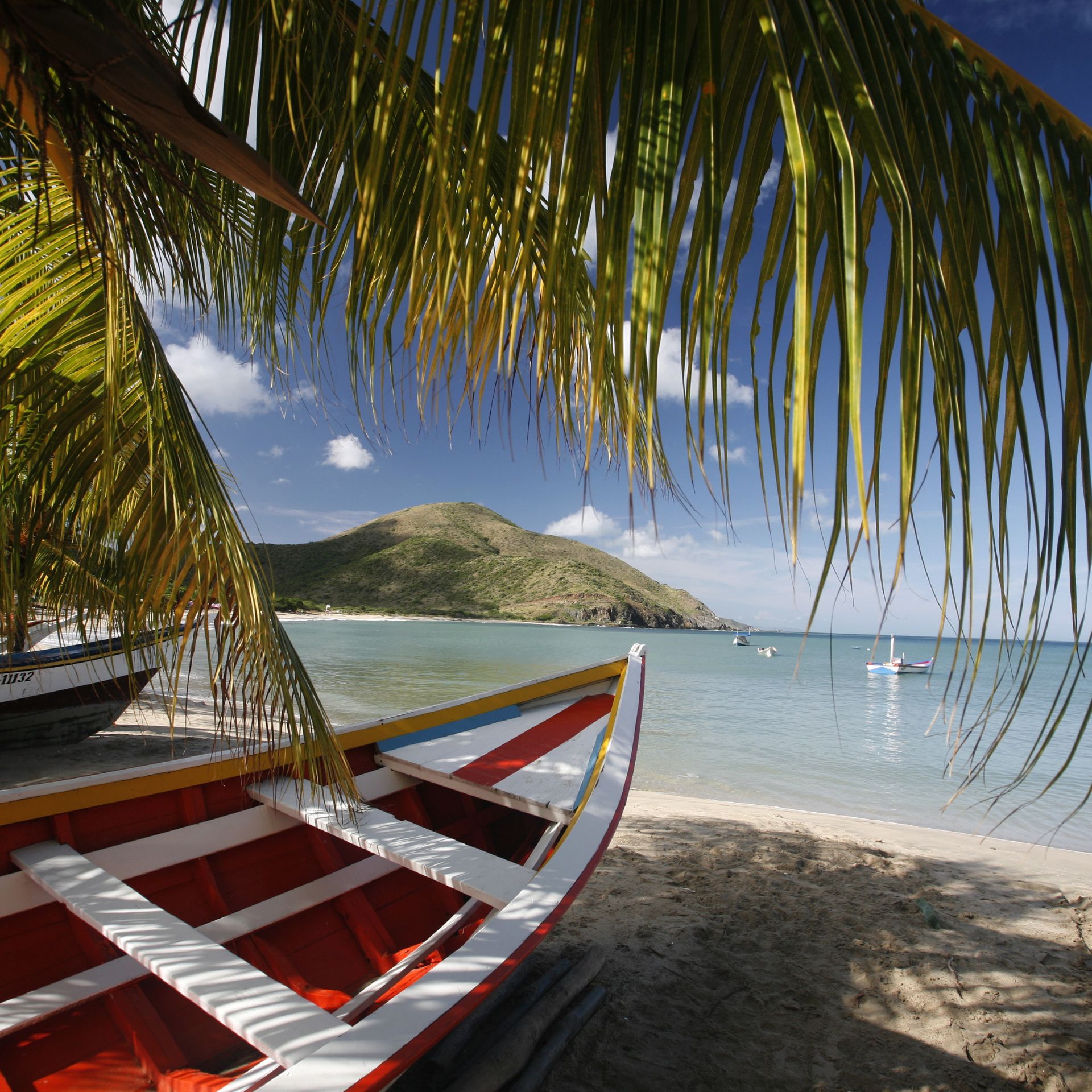
How to Get a Visa to Venezuela as an American

How Money Works in Venezuela
- July 16, 2024
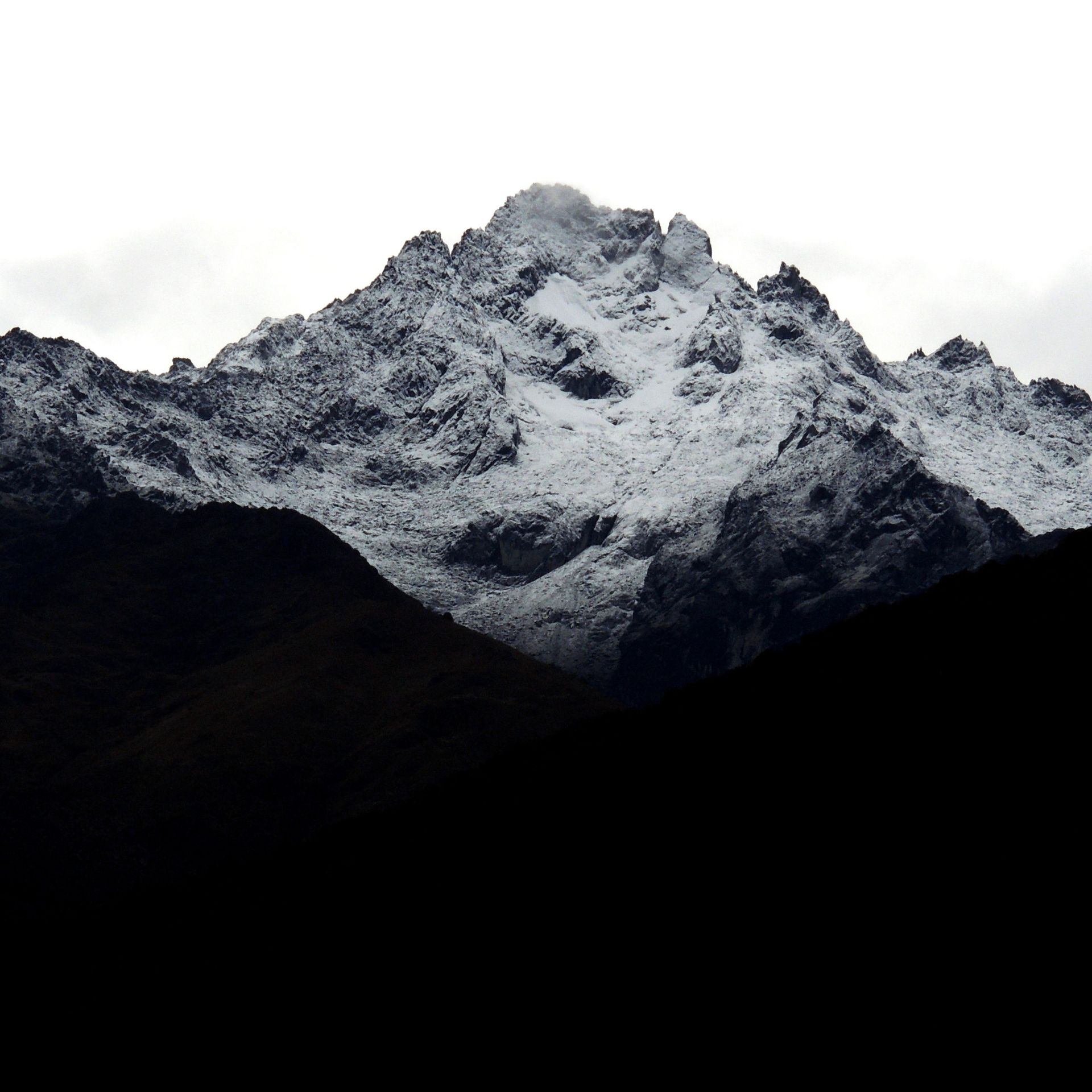
Sierra Nevada – The Last Glaciers of Venezuela are set to dissapear
- July 15, 2024
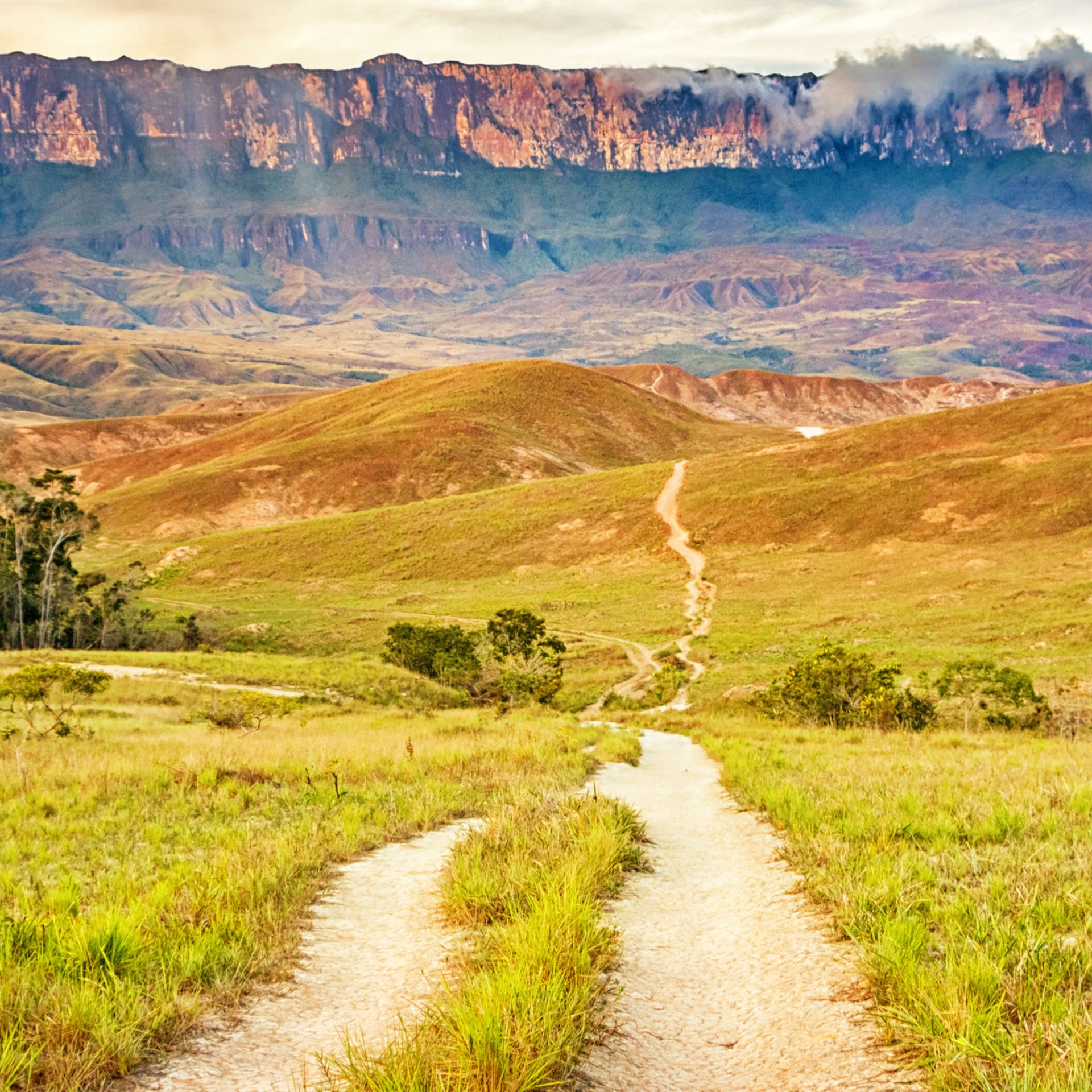
How to Get Around Venezuela
- July 11, 2024
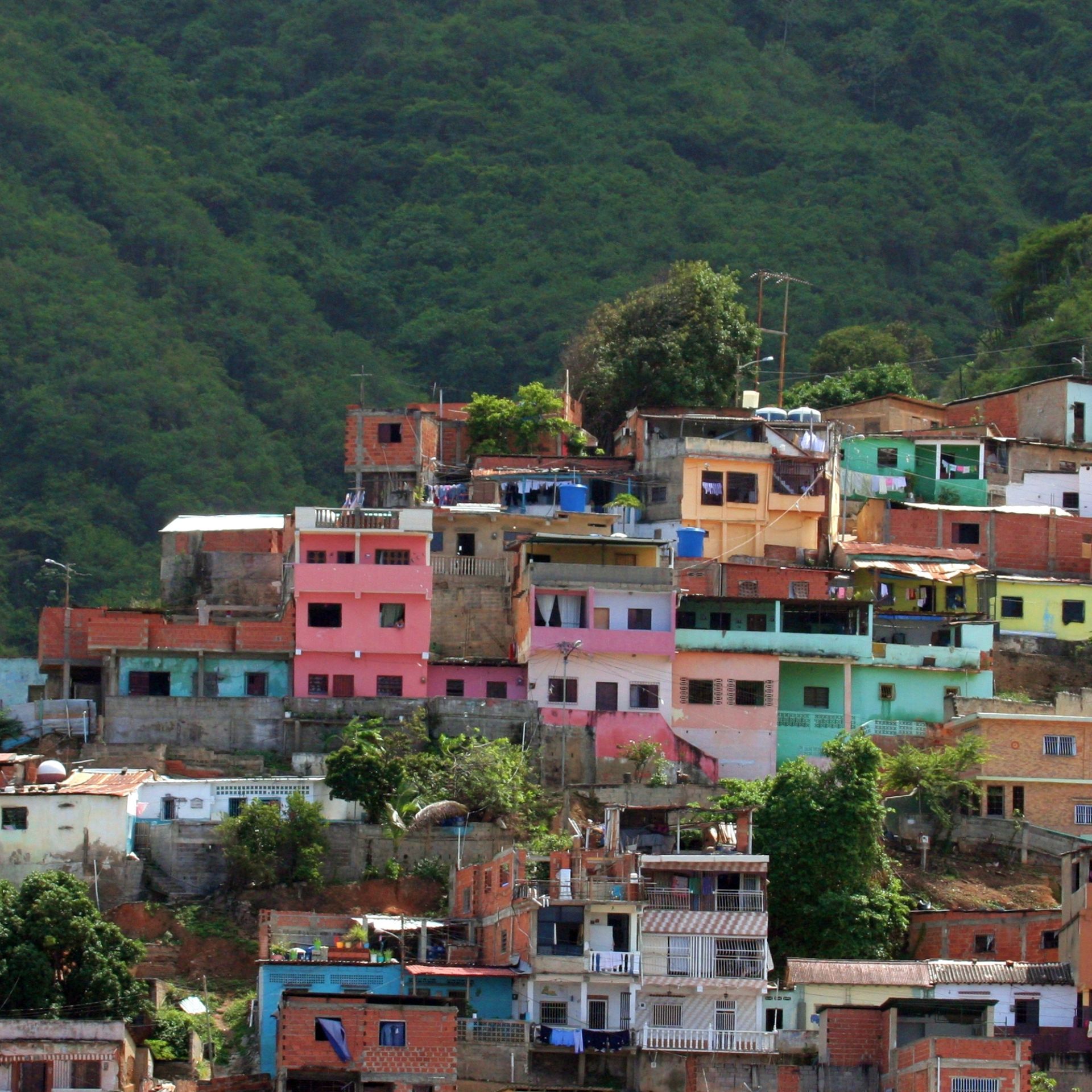
Internet in Venezuela – How to Be Connected at All Times in Venezuela
- July 5, 2024
NEED MORE INSPIRATION
My favorite national parks, planning a visit to victoria falls national park, planning a visit to the white desert and black desert in egypt, planning a gorilla trekking at bwindi impenetrable forest, planning a safari at masai mara natural reserve, planning a visit to saxon switzerland national park.
- Destination
- Travel journal
- Travel Journalism
Follow My Socials
Juan martinez, © 2021. all rights reserved, © 2024 all rights reserved.

- President’s message
- The President
- Council of Chiefs
- COFA Trust Fund Board
- Marine Sanctuary
- History & Culture
- Popular in Palau
- Palau Visitors Authority
Palau Pledge
- CEO Message
- Our Objectives
- Why Register with PISR
- ISO 9001:2015 | QMS
- ISO 37001:2016 | Anti-Bribery
- Code of Ethics
- Anti-bribery Policy
- GDPR Compliance
- Organization
- Our Core Team
- Global Maritime Consultants Group (GMCG)
- H.I.M.T. (ΕΛΙΝΤ)
- Union of Greek Shipowners
- Hellenic Shortsea Shipowners Association (HSSA) / ΕΕΝΜΑ
- Piraeus Propeller Club
- International Maritime Organization | IMO
- International Labour Organization | ILO
- Why Register with Palau Flag
- Qualification for Registration
- Registration Under Construction
- New Building Registration
- Transfer of Flag Registration
- Re-Registration
- Single Voyage Registration for Delivery
- Single Voyage Registration for Demolition
- Single Voyage for Sea Trial
- Bareboat Charter Registration in a Foreign State
- Bareboat Charter Registration
- Laid Up Registration
- Change of Name
- Change of Ownership
- Minimum Safe Manning Certificate
- Ship Station License
- Bunker Convention Certificate (BCLC)
- Civil Liability Certificate (CLC)
- Nairobi Wreck Removal Certificate (NWRC)
- Athens Convention, 2002 (PAL)
- Continuous Synopsis Record (CSR)
- Annuals & Renewals
- Closure of Registry
- Legal Framework
- Policy for Acceptance of Vessels
- Mortgage Recordation
- Discharge of Mortgage
- Maritime Liens
- Pleasure Yacht Registration
- Steps to Register a Pleasure Yacht
- Commercial Yacht Registration
- Steps to Register a Commercial Yacht
- Certificate of Endorsement (CoE)
- General Requirements for Officers Certificate of Competency by Examination and Training
- Officers in Charge of Navigational Watch (OICNW)
- Officer in Charge of Navigational Watch (OICNW)
- Chief Engineer
- Second Engineer Officer
- Third Engineer Officer
- Cerificate of Proficiency (COP)
- Seafarer Identification Record Book (SIRB)
- Maritime Labor Convention (MLC)
- STCW 1978 – the Manila Amendments
- IMO White List
- Approval of Training Center
- Acceptance of STCW Basic Training Certificate
- List of Accepted Medical Practitioners from PISR
- International Safety Management (ISM)
- International Ship and Port Facility Security (ISPS)
- Recognized Organizations
- Marine Investigation
- Cyber Security
- Piracy / Armed robbery
- The Long Range Tracking and Identification (LRIT) System
- FAQ about our Deficiency Prevention System
- Vessel Certificate Verification
- Seafarer Certificate Verification
- Marine Documents
- Legislation
- IMO Instruments
- Approval Of Service Suppliers
- P&I Clubs
- Radio Accounting Authorities (RAA)
- Life Saving Appliances (LSA)
- Point of Service Activation (PSA)
- Approved Service Providers (ASP)
- Training Centers
- Security Armed Company Approvals
- Piracy Analysis and Warning Weekly
- Worldwide Threat to Shipping
- Regulatory Updates
- Industry News
- Press Releases
- PISR at a glance
- Deputy Registrars (DR)
- Flag State Inspectors (FSI)
- Contact Form
- Customer Satisfaction Survey
- Website Review
- IMO 2020 Sulphur Regulation
- Would you Recommend us?
- Maritime Scolarships and Apprentice Leader System (ALS)
- Online Payment
- Fees & Requirements
Palau has become the first country to update its immigration policy and landing procedures to implement such legislation, aimed at preserving its vibrant culture and the beauty of its natural environment for future generations. It also hopes that other countries will follow suit to protect the planet for children worldwide. So when touriat arrive they will be asked to sign the Pledge to protect the Palau environment.
Palau has created a world-first conservation pledge, stamped in passports for visitors to sign a declaration to protect its environment and culture for the next generation. This compulsory promise is made directly to the children of Palau, to preserve this country, their home. On December 7, 2017, Palau became the first country to update its immigration policy and landing procedures to implement legislation with the goal of preserving Palau’s vibrant culture and the beauty of natural environment for future generations. Based on the Palauan tradition of BUL* and written with the help of Palau’s children, the Palau Pledge will be stamped and signed in the passports of every visitor.

Upon Arrival, All Visitors Must Sign the Palau Pledge , which is stamped into their passports.
Public notice: palau pristine paradise environmental fee (ppef).
In accordance with RPPL No. 10-16, effective January 1, 2018, the PPEF of One Hundred Dollars ($100 USD) shall be included in the price of every international airline ticket into the Republic of Palau. The ticketing airline shall be responsible for collecting the PPEF.
In the event the PPEF was not included in a ticket issued on or after January 1, 2018, it shall remain the responsibility of the airline to transmit the appropriate fee per arriving passenger to the National Treasury. For any tickets sold prior to January 1, 2018, with the passenger arriving and/or departing after January 1st, the BCBP shall continue to collect and charge the same fees totalling Fifty Dollars ($50 USD) upon departure for any airline passenger who arrived in the Republic of Palau prior to the PPEF implementation date and is departing on a ticket purchased before January 1, 2018. The amount collected upon departure in this situation shall be a Thirty Dollar ($30 USD) “Green Fee” and Twenty Dollar ($20 US) departure tax for a total of Fifty Dollars ($50 USD) for every non-Palauan passport holder. Such passenger must provide a copy of their ticket and any other supporting documentation as required.
You will need your passport and boarding pass, along with a ticket, e-ticket receipt or a printed e-ticket confirmation. Please make sure you have all these documents with you.
Palau expresses its deepest thanks for your support through the PPEF. The PPEF will help provide the financial and moral support necessary to continue our mission of protecting Palau’s natural environment for future generations. With your help, we will continue to hold true to our reputation as one of the most beautiful places and best diving destinations in the world.
LEARN MORE: https://palaupledge.com/

- Sender's Name *
- Sender's Email *
- Receiver's Name *
- Receiver's Email *
- Hidden File
Would you Recommend us? | Your Opinion Matters Click Here!

Rethinking Climate

The Palau Pledge For Eco-Sustainable Tourism
The initiative conceived in the pacific island shows that the commitment to adopt eco-respectful behaviour while travelling is fundamental to contributing to the fight against climate change..
The tourism sector is responsible for approximately 8% of global greenhouse gas emissions , resulting in it being even more polluting than the construction sector. Indeed, both transportation to touristic places and consumption of goods and services hardly comply with eco-responsible behaviours, and they consequently turn out to be highly detrimental to the atmosphere. In order to face such a challenge, it is required to implement strict regulations both internationally and domestically, as well as the introduction of modern technologies helping to mitigate the impact of touristic practices on the environment. However, in addition to these more ambitious projects, it would be nonetheless important for the tourists to adopt more eco-sensible behaviours while visiting their destinations, as this would contribute to protecting the biodiversity of the natural landscapes more exposed to touristic flows. Against this backdrop, it is worth recalling Palau’s innovative example of the management of people visiting the island.
The Republic of Palau is a small insular nation situated in the Pacific Ocean. Tourism is the largest and most profitable industry in Palau, constituting its main source of income and employment. The massive number of tourists, while increasing the economic resources of the country, on one hand, has endangered the territory’s biodiversity on the other hand. In light of this, throughout the years the local government adopted manifold strategies in order to pull a plug on this concerning trend: unfortunately, very few concrete results were achieved. For these reasons, in 2017 was promoted the Palau Legacy Project, which was a campaign enshrining the creation of a never-seen-before document: the Palau pledge. Due to such an innovation, Palau has been the first country to change its domestic immigration laws for motives related to environmental protection.
The Palau Pledge is a short passport-like declaration that visitors have to sign before being allowed to access the island, in order to formally commit themselves to adopt behaviours respectful of the ecological and cultural traits of the country during the whole permanence on Palau’s territory. Therefore, every single tourist needs to assume the duty to preserve the land, not take what is not given, and not cause harm without exigence of self-defence. Conclusively, visitors must promise that the only footprints they will leave behind them are those which will be washed away by the waves of the ocean.
This document is even more significant because its drafting was carried out with the help of children from all over Palau, as to emphasize its importance in terms of guaranteeing the next generations. In line with this, the vows contained in the declaration are formally addressed to every kid of the island.
As redundant as it might be, it is useful to clarify that the Palau Pledge in itself is not enough to establish binding legal obligations on individuals. Consequently, breaches of this declaration would not amount to unlawful acts (unless they violate other official norms too). Nevertheless, the mandatory signing of such an instrument represents a commendable communication initiative to shed light on the paramount character of sustainable touristic behaviours and attitudes.
Share this:
- Click to share on Twitter (Opens in new window)
- Click to share on Facebook (Opens in new window)
Published by Gianpaolo Mascaro
View all posts by Gianpaolo Mascaro
Leave a comment Cancel reply

- Already have a WordPress.com account? Log in now.
- Subscribe Subscribed
- Copy shortlink
- Report this content
- View post in Reader
- Manage subscriptions
- Collapse this bar

The Palau Pledge: An immigration stamp prompts respect for nature
To promote sustainable tourism, the island of Palau has a new visa mandate: all tourists must sign a pledge in their passports to preserve nature
What unsustainable behavior needs to change :
Palau, a Polynesian island nation, faces a critical challenge rooted in its heavy reliance on tourism (85% of its GDP, pre-COVID). Tourism alone equates to more than eight times its own population, with 160,000 tourists arriving each year. However, it also poses a significant threat as thousands of tourists year after year leave behind trash, engage in harmful interactions with nature and pose a significant danger to the islands’ delicate ecosystem.
The local government initially pursued a communication strategy centred on the island’s visitor experience and natural beauty. However, despite these efforts attracting more visitors, they failed to address the initial problem.
The Green Nudge:
A group of four local activists joined forces with Host/Havas and created the ‘Palau Pledge,’ which asks visitors to make a promise to preserve the island’s extraordinary wonders. This is achieved through a mandatory passport stamp, which every traveller must sign upon their arrival in Palau.
The pledge, written by the children of the island, asked visitors to embrace the culture, respect the environment and make sure that “the only footprints I shall leave are those that will wash away.” The stamps were produced in the five major visitor languages: Japanese, Korean, English, Chinese, and Taiwanese.
The result : Unfortunately the impact could not be measured and isolated. According to Havas, 96% of tourists said “the pledge made them consider their actions more closely,” while 65% said they used the pledge’s principles during their stay to remind others about the right way to protect Palau’s delicate environment.
While specific behavioural data for the effectiveness of the intervention is lacking, research on the signature effect and its influence on behaviour has been explored in various contexts:
- Psychological Commitment: When individuals physically sign their names on a document or pledge, it creates a sense of personal commitment. They are more likely to follow through with the promise they’ve made because it aligns with their self-image as someone who keeps their word.
- Identity Alignment : When tourists sign the pledge, they are not just making a commitment; they are aligning themselves with a specific identity – that of a responsible and environmentally conscious traveller. By signing, tourists signal to themselves and others that they are part of a group that values environmental preservation, which can lead to behaviour that supports this identity.
- Social Norm Formation : Tourists arriving in Palau see others signing the pledge and conform to this social norm, making responsible behaviour the expected and accepted standard.
Are you aware of any other nudges that promote sustainable tourism? Feel free to get in touch: [email protected]

“Green Lanes”: Steering passenger behaviour on railway platforms
Nudging passengers with visual cues can reduce rail congestion and thus make public transport more attractive.

- Industry News
Palau Becomes First Country to Require ‘Eco-Pledge’ Upon Arrival

The island nation of Palau has taken a bold step in a new direction towards conservation: requiring every incoming visitor to sign a stamped pledge in their passports to be good environmental stewards for the duration of their stay.
A UNIQUE KIND OF PARADISE
Located in the western Pacific Ocean, the Republic of Palau is a collection of islands that is as beautiful as it is diverse. From coral atolls like Kayangel, to the tiny Rock Islands made entirely of limestone, to the magical underwater world of Jellyfish Lake, visitors to Palau get to experience many different definitions of paradise.
Like many other island nations in the Pacific, Palau relies on tourism as a primary driver of its economy. Each year, throngs of tourists come from all over the world to explore Palau. In recent years, the average number of visitors to Palau’s shores are almost seven times greater than the local population. However, as those numbers continue to grow, problems arise. Numerous examples of tourists disrespecting the natural and living ecosystems—largely out of ignorance—have been cited in the recent past.

Visitors explore a sand bar during low tide in southern Palau, a remote archipelago between the Philippines and Papua New Guinea.
THE PALAU PLEDGE
On the evening of December 7th, when the routine flight from Guam landed in Palau, tourists and visitors were greeted to a much different arrival process than they were expecting. Instead of the typical entry stamp in their passports, they received a stamped pledge—resembling a five-stanza poem—with a set of vows to the youth of Palau. To enter the country, everyone must sign off on promises to “tread lightly, act kindly, and explore mindfully.”

In addition to the stamp itself, the Palau Pledge initiative comes with a mandatory in-flight video that educates all incoming visitors about their responsibility to be environmentally responsible, along with a checklist of dos and don’ts that is distributed upon arrival.

Every incoming visitor must sign this stamped pledge in their passports to be good environmental stewards for the duration of their stay.
To ensure that the Palau Pledge is more than just a superficial effort, there are national policies in place to strengthen the enforcement of environmental protection laws, including increased policing and reporting efforts.

At its core, this initiative aims to ensure that the youth of Palau inherit the same pristine natural resources that have existed in the country for countless generations. It also highlights the importance of striking a balance between development and conservation.

President Tommy Remengesau Jr. is one of the leading voices behind this movement of environmental stewardship, both in Palau and worldwide. He believes that “It is important that our valued guests understand the values we Palauans place on our natural environment and its resources that have sustained us for millennia.”

This floating hut is used for both recreation and fishing by the residents of Kayangel Atoll.
ANCIENT WISDOM FOR THE MODERN DAY
A foundational element within many conservation efforts in Palau is the concept of bul or fishing ban. This word represents a system of traditional Palauan resource management, used primarily by village chiefs in ancient times to manage fish stock. When the village observed a decline in the number of fish off of their shores, they would issue a temporary halt—or bul—of all fishing activity to allow for the marine life to flourish and replenish.

This video is now required in-flight viewing for all visitors to Palau.
Today, many locals feel that the Palau Pledge is a small but significant step towards shifting tourists’ attitudes about the value of the country’s natural and living resources. Though it is too early to tell, many are hopeful that the Palau Pledge can also serve as a tool to galvanize the local community towards the same vision of conservation—one that transcends generations, village lines, and political agendas.

Two Palauan children race along a beach in the Rock Islands.
Dan Lin is the Director of the Pacific Storytellers Cooperative at PREL, based in Hawaii. You can follow him on Instagram @dan_lin_photos or Facebook @danlinphotography
(Source: published in National Geographic Travel 18 December 2017)
The post Palau Becomes First Country to Require ‘Eco-Pledge’ Upon Arrival appeared first on Discover the South Pacific .
Source: Blog
Related posts

Port Denarau Marina The First Clean Marina in the Pacific Islands

Yap’s Unique Culture to Feature at the 3rd Micronesia Expo in Chuuk

Pacific Tourism Organisation and Vanuatu Tourism Office Collaborate on Data Analytics Capacity-Building Workshop in Port Vila
- LATEST WORK
- Creative Profiles
- Contributors
The "Palau Pledge" where visitors to the country sign a stamp in their passports agreeing to respect the environment

Palau: an idyllic Pacific island nation. With coral reefs, turquoise waters, emerald forests, white beaches and all the sunsets, it’s got everything a travel Instagrammer’s feed needs.
With so many natural wonders, it’s unsurprising that tourism is the biggest driver of Palau’s economy. But, with tourists visiting in ever more unsustainable numbers, problems have inevitably arisen in the form of pollution, litter and damage to Palau’s delicate environment.
To tackle the problem the Palau tourist office and government sought help from Australian ad agency Host/Havas, and together had an idea that bagged a coveted D&AD Black Pencil last month.
The Big Idea
That idea was the ‘ Palau Pledge ’.
The Palau government changed its immigration policy so, at border control, visitors would need to sign a stamped pledge in their passports agreeing to respect Palau’s environment, promising to “tread lightly, act kindly and explore mindfully.”
The stamped pledge filled a page in each tourist’s passport and was delivered in the form of a short poem written by Palau children – a poignant, neat reminder to be a good tourist whenever a visitor flicked through their passport.
And so Palau became the first country worldwide that only issues visas to tourists who sign an eco-pledge.
What They Did
In addition to the pledge, and rewriting immigration law, the agency produced copious supporting ads, digital video content, an in-flight video, ethical guides, information packs distributed at airports, checklists for tour operators and stories from Palau’s residents. Much of this content lived on an online resource hub where visitors could also sign a form of the pledge.
In PR the story was covered extensively in many of the world’s biggest news, travel and lifestyle media.
And while not required for success, eco-celeb Leonardo Di Caprio’s endorsement certainly helped attract more mass earned media coverage for the Palau Pledge.
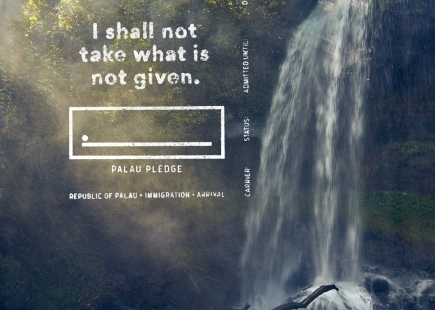
Stamping a passport and asking tourists to sign-off on an agreement to be more environmentally-friendly is a simple enough concept. But behind that simplicity you wonder how administrative and bureaucratic obstacles had to be surmounted.
I’d hazard a guess that if an FMCG brand attempted this kind of idea it would find it fiendishly difficult to get off the ground. It helps that in this case the ‘brand’ was the Palau Visitors Authority and the state itself. But that shouldn’t take away from the creativity and ambition on show in the idea.
Coming up with a marketing idea that sees a nation state, even a small one, amend its immigration law and secure the full backing of the local population, including the President, is no mean feat. So the agency should be commended for this original and bold creative.
The Palau Pledge is an outstanding example of integrated comms in practice with a brilliant creative PR story at its heart.
In Hindsight
This was an original idea that established the archipelago as a pioneer; I wouldn’t be surprised if other nations adopt a form of the pledge.
But the question remains about how well it will work over the long term.
The idea’s makers say it was designed to drive awareness, something it clearly achieved. But it would be a shame if Palau wasn’t also measuring long-term effectiveness.
If there’s one weakness it’s that the pledge only works if visitors keep their promises.
A country dependent on tourism won’t resort to policing the pledge. That would potentially drive away the economy’s life-blood. So the majority of visitors must consciously stick to the pledge for it to genuinely benefit the environment.
Given the ingenious, even-handed way the idea disrupts the travel routine, engaging visitors at passport control to secure their entry visa, I’d like to think it has the authority to move people to stick to the pledge.
Time will tell.
If you enjoyed this article, you can subscribe for free to our weekly email alert and receive a regular curation of the best creative campaigns by creatives themselves.
Published on: 8th June 2018
Subscribe for FREE Today
Creative Moment will never share your details. Privacy Policy .
Looks like you're enjoying our content. To keep up to date with what is going on in the creative world, simply enter your details below.
Important: Once completing the form we will send you a confirmation link which you will need to click on to confirm your subscription. If you do not receive this email within a couple of minutes please check your spam folder. Not in your spam folder? Please email [email protected] for help.

Login | Register
- Special Collections
- Research Integrity
- Become a reviewer
- Author Guidelines
- Editorial Team
The Palau Legacy Pledge: A Case Study of Advertising, Tourism, and the Protection of the Environment
Author: Ismael Lopez Medel (Department of Communication Studies, Azusa Pacific University, Los Angeles, California)

- Harvard Citation Style
- Vancouver Citation Style
- APA Citation Style
- Download RIS
- Download BibTeX
Environmental challenges are affecting every aspect of our lives, especially among the world’s largest industry: tourism. This chapter studies the application of creativity to a tourism campaign for the Republic of Palau, an island nation in the Pacific, in need of promoting tourism and educating visitors while protecting the environment. It is the story of four local activists who convinced their government to think creatively. The result is the Palau Legacy Project, a campaign that included a special pledge that visitors needed to sign to gain access to the island. The campaign was critically acclaimed, winning three Cannes Lions Grand Prix and seven D&AD Festival pencils, gathering over 280,000 pledges, 1.7 billion impressions, and $6.2 million in earned media. Most importantly, it demonstrated how innovation, boldness and creativity make advertising an unstoppable force.
Keywords: Host/Havas, sustainability, environment, tourism, Cannes Lions, Palau, Advertising
Medel, I., (2020) “The Palau Legacy Pledge: A Case Study of Advertising, Tourism, and the Protection of the Environment”, Westminster Papers in Communication and Culture 15(2), 178–190. doi: https://doi.org/10.16997/wpcc.380
Downloads: Download XML Download PDF
836 Downloads
5 citations, published on 31 jul 2020, peer reviewed, creative commons attribution 4.0, advertising and tourism.
The advertising industry has been extensively researched and documented by social scientists for the last hundred years. One of the initial efforts in the field has been the measurement of the effectiveness of advertising. Thus, different models have emerged to explain how advertising works. Most of these models are hierarchical, explaining the response from consumers as a series of steps organised as a progression that should render a type of response to the message. One of the earliest models was AIDA (Attention, Interest, Desire, Action) which was proposed by Strong in 1925 and widely adopted by the industry. The AIDA model explained that advertising worked first by grabbing the consumer’s attention, then sparked an interest that would lead to a desire and, finally, an action, which translated as consumer behaviour adjusted to the consumer goods industries. Later on, new models appeared, such as DAGMAR (Defining Advertising Goals for Measured Advertising Results) that proposed four steps to achieve effectiveness in advertising: awareness, comprehension, conviction and action ( Colley, 1961 ). These models have served as the theoretical framework for multiple revisions and adjustments to build an accurate understanding of the advertising process ( Barry and Howard, 1990 ). Other approaches include measuring the concept of conversion ( McWilliams and Crompton, 1997 ), tracking ( Siegel and Ziff-Levine, 1990 ), or purchase models ( Kulendran and Dwyer, 2009 ).
However, in the tourism industry, these models have proven insufficient to include the complexity of such a layered consumer process, crucial for the health of the tourism industry ( Park and Nicolau, 2015 ). Consumer behaviour in tourism has been widely studied, and there are multiple models to understand its complexity ( Scott et al., 2014 ). These studies argued that measuring the effectiveness of advertising for the tourism industry could not merely be limited to tangible results, such as numbers of visitors or dollars spent on a destination. Instead, they emphasised intangibles such as brand awareness, destination awareness and recognition ( Govers et al., 2007 ; McWilliams and Crompton, 1997 ; Byun and Jang, 2015 ).
Tourism is one of the world’s largest industries, worth US$8.9 trillion yearly, 10.3% of the global GPD, and employing 10% of the jobs around the globe (WTTC, 2020). Tourism worldwide has developed in three phases: first, it was centred on the ‘get-away’ experience (1950–1970). Later on, it became destination-driven (1980–2000), then evolved into an experience-focused industry in the new century ( Ward-Perkins, 2018 ). In this new context of experiences, advertising plays a fundamental role, and its impact has been extensively researched. Scholars agree that multiple variables impact the effectiveness of the advertising process, especially in light of the technological revolution of the twenty-first century. As global travel becomes increasingly available, destinations have doubled their efforts to attract visitors. Studies in the field emphasised the complicated nature of advertising for tourism because of the possibility of not receiving an immediate response from consumers ( Wijaya, 2013 ). Many other authors, such as Weng and Huang ( 2018 ), have proposed updated revisions of traditional models to capture the nature of the process. For instance, the AUIDCA model adds two essential elements to the AIDA model: utilitarianism (what consumers will find useful in the message) and credibility (trust and brand reputation). The idea of trust as a core element of destination communication is also extensively researched and studied ( Shavitt et al., 1998 ). Therefore, a destination must promote trust ( Loda et al., 2005 ).
Tourism is the primary industry of Palau’s island nation, its main source of income and employment. At the same time, it is also its main threat: year after year, thousands of tourists leave trash behind, interact with nature in harmful ways and pose a significant danger to the islands’ delicate ecosystem. The local government had followed a communication strategy based on the consumer experience of the island and its natural beauty. Moreover, while the campaigns increased numbers of visitors, they did not solve the initial problem. Looking for a way to solve the problem, four local Palau residents with backgrounds in advertising and branding came up with an ingenious solution that would change their country’s laws.
Through a non-traditional take on advertising for the tourism industry, a group of four local activists joined forces to suggest a different route: a bold campaign that gave control of the island to its visitors, and used creativity and ingenuity to turn around a negative message. With backgrounds in marketing and advertising, the four environmentalists who set to protect their island ended up changing the nation’s laws and developed one of the world’s most acclaimed advertising campaigns of 2017.
The Palau Pledge is an excellent case to illustrate the importance of trust in the communication process. It introduced a never-before-seen requirement from the audience, a commitment to support the philosophy of the island, the value of protecting the environment, and the fight to support the local culture. In other words, it is an extreme example of trust: it only works if the visitors are willing to submit their entry to the island to the pledge signature, a signature that will serve as the official visa to enter the country.
The Palau Pledge is an innovative example of disruption, a campaign with an impact powerful enough to modify the country’s legislation. It sends a bold message beyond the traditional invitation to enjoy the stay: visitors to Palau are now entrusted with the future preservation of the island. As Collen Decourcy, Co-Chief Creative Officer at Wieden & Kennedy and president of the Titanium Lions Jury at Cannes Film Festival, explained, the Palau Pledge project ‘went beyond messaging was not interrupted but integrated into the process. It changed the minds of governments and made them do something sustainable. It took pieces from everything we loved in the other Titanium winners and put them into this idea that’s world-changing. This felt like something we should be thinking about moving forward.’ ( Diaz, 2018 ).
As we will see later, the innovation of the idea was rewarded with an enthusiastic reaction from the visitors and legislators, and set the tone for other similar island nations to be innovative and bold. The advertising industry’s enthusiastic reception of the campaign is an indication of where the future of tourism advertising may be: in connecting trust and creativity.
Tourism in Palau: A blessing in disguise
The island nation of Palau is the thirteenth smallest country in the world. It is famous for its breathtaking beauty of three-hundred and forty islands as a focus of tourism in the South Pacific. The richness of its natural resources has granted Palau the unique privilege to receive in 2012 a UNESCO destination that protects its environment, one of the only six nations in the world to have received such denomination ( UNESCO, 2017 ).
Palau is one of the biggest innovators in terms of environmental concern. In 1979, it became the first country in the world to vote for a nuclear veto, and in 2009, it became the world’s first national shark sanctuary ( PVA, 2016 ). Palau also signed the declaration at the Our Ocean 2017 conference, organised by the European Union, aiming to ‘inspire a new generation of leaders, entrepreneurs, scientists and civil society to develop solutions and take action to promote sustainably managed oceans […] underlining their commitment to joining forces to preserve corals and the lives of the many populations that depend on them’ ( FAP, 2017: 29 ).
Palau offers pristine beaches, breathtaking islands, and a paradisiac environment in what has rapidly become a sought-after high-end destination that has experienced a constant increase in visitors over the years. The privileged environment translates into a tourism industry that adds up to 85% of the nation’s GPD, according to the World Trade Organization ( D&AD, 2017 ), and 63.6% of the over eleven thousand-strong labour force of the country ( Global Edge Knowledge, 2018 ). Tourist arrivals have grown in recent years, reaching a record of 160,000 in 2018, a figure to consider against the 21,685 inhabitants of the island (July 2020). The increase of tourism can be explained by the rise of air travel, the influx of Chinese travellers and the nation’s proximity to Guam, the region’s leading destination ( CIA, 2019 ). As the Asian economies grew in the past decade, it suddenly became a more affordable destination for new waves of tourists.
However, many new visitors were not as environmentally concerned as in the past, which presented a problem for the island’s fragile environment ( Clarke, 2018 ). More visitors mean more irresponsible behaviour and lack of care for the flora, fauna and island ecosystem. Tourists leave trash behind them, destroy the coral reef, interact with the local animals in an unsustainable way and disrespect nature. The same people who sustained the economy of the island were also its primary threat.
In line with other natural destinations, Palau focused the advertising efforts on promoting a relaxed and active experience for visitors ( Luo & Deng, 2008 ). The most significant campaign was the 2013 Palau Responsible Travel campaign which was launched with the financial support of the Prince Albert II of Monaco Foundation through Conservation International ( FAP, 2013 ). The idea was to work ‘with local communities to make the mechanism attractive to investors and to ensure that it meets the area’s protection needs and the population’s socio-economic development needs’ (FPA 2013: 13) and with the Marisla Foundation through the Global Greengrants Fund. The goal was to educate tourists about the environment and culture of Palau through a series of recommendations.
Two years later, Palau established the Palau National Marine Sanctuary with the mission to ‘support the sustainability and balance between our natural resources and economic development, ensuring that all of what makes Palau the Pristine Paradise it is today, will last for generations to come. Stewardship of the ocean and working within the limits of the environment has always been the way of the Palauan people. Balancing growth and sustainability remains in the best interests of this nation and its people’ ( PVA, 2016: 9 ).
Nevertheless, these campaigns were not achieving the desired results. Nanae Singeo, co-founder of the Palau Legacy Project and currently the Managing Director at Palau Visitors Authority of the Government of Palau, expressed the urgency in the Destination Think Forum 2016: ‘Sustainability so important here, because it’s their lifeline, it’s their culture. So, unless we can protect and embrace that, there’s no more Palau. The people need the environment for their customary practices, and we’re taught to conserve it’ ( PVA, 2016 ).
Despite the governmental efforts to educate the tourists through the Palau Responsible Tourism campaign, it soon became evident that the problem’s complexity required a more creative solution. At least, that is what a group of four residents with a background in marketing and communication thought.
Laura Clarke is an Australian marketer who moved to Palau in 2015 with her husband, Lieutenant Commander Ben Fennell, of the Australian Navy Surveillance Adviser. With a background in marketing and advertising, she soon realised the challenge of the new waves of tourism and the lack of connection with the local Palauan understanding of the environment. Along with three other experts in marketing and communication, Nicolle Fagan, Jennifer Koskelin-Gibbons, and Nanae Singeo, Clarke decided to join forces and look for a creative solution to the problem, which resulted in the launching of the Palau Legacy Project in 2017 ( Green, 2019 ).
The group had a wealth of knowledge and experience in the field and a passion for the environment. Nicolle Fagan worked in the Palau Project until she was offered a position as marketing director of the Anderson Cabot Center for Ocean Life at the New England Aquarium in Boston. Jennifer Koskelin-Gibbons is the president of the Pew Bertarelli Ocean Legacy project in Palau. Nanae Singeo is the former managing director at Palau Visitors Authority of the Government of Palau. Together, they approached Palau’s First Lady, Debbie Remengesau, with the idea that was about to change the history of their nation.
The Palau Legacy Project became a think tank that quickly identified the complexity of the local authorities’ challenge: how to find a way to engage tourists in preserving the island without being rude. Singeo explained the need for a different campaign to further the impact of the Palau Responsible Tourism campaign:
Palau is a very small island nation, so capacity has been one of our challenges, along with management and how to communicate about them. I think it’s really important that we know our limitations and our capacity. We’re also identifying more appropriate or meaningful ways to convey our message, not necessarily to explain the ‘dos and don’ts’, but instead, ‘Here’s how we like to communicate to protect the environment and to protect the culture’. We’re working on that particular campaign right now ( PVA, 2016 ).
However, many inside the government met their approach with scepticism. The main concern was the potential hurt of such a campaign on the tourism industry, and whether tourists would be on board with the message or would feel ‘policed’ ( D&AD, 2017 ).
The Palau Pledge Campaign vision
Through mutual connections, the Palau Legacy Project reached Host/Havas, the Sydney branch of the multinational ad group of Red Havas, to seek help with the campaign ( Green, 2019 ). Seamus Higgins, Executive Creative Director of the agency, explained that the brief explained how the island had ‘a huge influx of tourists since 2015, but they did not have the infrastructure set up to ensure the cumulative impact of these tourists was looked after properly. The biggest part of the brief was that we do not want to stop these tourists from coming, which is really important to our economy. We need to educate them so they can become aware of the collective impact they have placed on Palau’ ( Griner, 2018 ).
Higgins became the director of a collaborative project that lasted two years and involved a brief on the campaign and a return pitch of forty-seven ideas, including one that stood out for its creativity and boldness: to get the government to change the immigration laws of the island. Adam Freedman, Group Practice Head, was the leading creative mind behind the project at Host/Havas. With plenty of experience in public relations, social media and lifestyle, Freedman led a team of six creatives and designers to work on the campaign.
When Havas took on the project, they immediately studied Palau’s benefits in establishing the campaign’s central concept. The functional benefits were clear and had been used in previous communication from the local government. The campaign showcased the idea of presenting Palau as an opportunity to experience one of the world’s last paradise islands. However, while previous campaigns had stopped there, Havas also explored the emotional and symbolic benefits. They quickly realised the possibility of establishing a meaningful emotional connection with the audience, providing an unmatched experience. The symbolic benefits of the campaign were also significant. Such an innovative idea was designed not just to surrender control, but to partner with the visitor and make them stewards of the island.
An added element of the challenge was the limited resources available for tourism, barely 1% of the nation’s budget ( PVA, 2016 ). Still, Laura Clarke had faith in the vision: ‘a genuinely innovative solution which provides a significant first step to increasing awareness around eco-tourism practices and what the global community can do to collectively take greater responsibility and make a difference’ ( Freedman, 2018 ). From the beginning, it was clear to Havas that the campaign would require creativity and ingenuity also in the financial aspects: ‘it was clear that we would not have the media budget to reach the tourists’ markets around the world’, explained Higgins at the Cannes Lions Festival, ‘and that when it was offset against the fact that the problem of mass tourism, of unsustainable tourism, is a global problem, and there are countries dealing with it all around the world, we knew that if we were able to tap into something there, then this would be something that would raise an eye all around the world because they are all experiencing that problem’ ( Griner, 2018 ).
Havas looked for insight with constituencies, such as local business owners, educators, government officials, and, most importantly, Palau’s children. For them in particular, they hosted workshops where they discovered the language and the Pledge’s tone. Co-founder Laura Clarke explained that the campaign’s underlying spirit was the local love and respect for the environment: ‘they have been custodians of a culture of conservation for millennia. I think we can take away from this and try to talk to other politicians around the world about that this ancient cultural wisdom is something that we need to pay attention to. I think it’s in a lot of cultures, but we ignore it. That’s one of the big lessons: that we need to go back to the basics. We need do put the environment before profit’ ( Green, 2019 ).
Havas ECD Seamus Higgins, leader of the project, explained that the creative process inside the agency involved focusing on intercultural sensitivity: ‘It became clear that there were vastly different cultural approaches to travelling between these nations [the five main tourist markets for Palau]’. But the team realised that the common ground was to appeal to tourists’ humanity: ‘Our starting point was that we need to change people’s behaviour. To do that, we had to make a genuine human connection with them. We had to make sure that whatever we did, every single tourist would be forced to make that connection’ ( D&AD, 2017 ).
Campaign objectives
The campaign had two objectives. The first one was to develop a behaviour-changing solution to the problem. The goal was to educate visitors on their impact on the island’s environment, but also provide them with practical, non-intrusive solutions to cooperate and turn the negative impact into a positive one. Instead of establishing a series of legislations and regulations, the visitors would simply ‘police themselves’.
The second goal was what Higgins termed a ‘human connection’ to the island ( Griner, 2018 ). Palau was establishing a meaningful connection with the visitors by surrendering control of the entire experience to them. The campaign took a risk by trusting visitors to align with the values of the island and its culture. Beyond that, visitors were asked to actively participate in the preservation of the local environment, traditions and culture.
Campaign tone
Because of the emotional connection desired from the audience, the tone of the campaign was soft, positive and emotional. It was built upon a conversation between the children of the island and the visitors. The participation of children in the campaign, one of its most significant features, not only added human depth and meaning but also allowed the community to embrace the campaign as their own. The idea to use children as the narrators of the pledge resonates with the thoughts shared by one of the co-founders of the Palau Legacy Project, Koskelin-Gibbons, as she explained that one of the main drives of the campaign was to protect their children. According to official sources, the Palau Pledge was added as educational content in schools through the Ministry of Education ( palaupledge.com ).
Havas introduced the concept of ‘for those who follow’ by asking visitors to do something for Palau’s children, they ensured the emotional, human cut-through they wanted. Higgins explains, ‘Suddenly it became very human. Nobody could deny wanting to leave a better world for our children. That’s shared in every single culture. They set about looking at elements of institutional architecture that could be used, considering using the nation’s currency, as was leveraging the name of the country itself, but eventually, the act of passing through customs won out. It would ensure that no tourist could enter Palau without encountering the campaign’. ( D&AD, 2017 ).
The tone was designed to convey a profound, emotional message from the children of the island. The colour palette reflected the natural colours of the islands, the sea and the landscapes of the island: the pieces were filled with emerald, light green, blue and light brown tones. The text of the pledge draws its inspiration on the Palauan tradition of BUL. According to the official website, BUL is ‘a moratorium declared by Palau’s traditional leaders that places an immediate halt to the over-consumption or destruction of a species, place or thing’ ( palaupledge.com ). It has become the symbol of the Palau National Marine Sanctuary and the Palau Pledge, modern-day applications of a traditional BUL.
Campaign execution
The Palau Pledge campaign included a series of deliverables, including the physical stamp of the pledge, brochures and a passport booklet, a four-minute inflight video, a website and street signage. It became the first country in the world to require such a document as a legal form of immigration legislation.
One of the most remarkable features of the campaign is that it required a physical stamp to be used by immigration officials at the airport. The stamp included the text of the pledge and served as a new visa requirement to enter the islands. The pledge, written by the children of the island, asked visitors to embrace the culture, respect the environment and make sure that ‘the only footprints I shall leave are those that will wash away’. The stamps were produced in five languages: Japanese, Korean, English, Chinese, and Taiwanese, according to the critical inbound visitors’ markets of the island. The logo was created based on the Palau Flag and later abstracted to the ‘sign here’ box in the pledge. The pledge also allows the government the legal power to enforce fines up to one million dollars for visitors who disobey the regulations ( Sachs, 2017 ). The agency also created training documents for the immigration authorities and customs personnel.
Tourists needed to sign a pledge of responsibility that was created with local children›s cooperation and read as follows:
Havas ECD Higgins explained the use of the passport as a measure to add seriousness to the pledge: ‘When people sign something they’re much more likely to act on something than if they just verbalised it. The passport itself is a personal item, which is carried everywhere; by integrating the campaign directly into this document, it become intimate and powerful’ ( D&AD, 2017 ).
The campaign was supported by local governments, communities, and community groups. According to the official press release, the number of agencies and communities involved in the launch of the program included the Palau Conservation Society, the Palau National Marine Sanctuary and Friends of the Palau National Marine Sanctuary, Ministry of Education, Ministry of Justice, Palau Visitors Authority, Ministry of Natural Resources, Environment and Tourism, Ministry of Finance, Ministry of Public Infrastructure, Industries and Commerce, Ministry of Community and Cultural Affairs ( palaupledge.com ).
The stamp in the passport was only the introduction to the pledge. The campaign also included eleven recommendations for tourists, using different printed formats, such as placards, posters, and outdoor signals and displayed all over the islands. These recommendations were similar to the ones included in the Palau Responsible Tourism campaign (2013): support local businesses and communities; learn about the culture and the people; get others to respect the custom; don’t touch or step on coral; don’t smoke in restricted areas; don’t collect marine life souvenirs; don’t feed the fish and sharks; don’t drag fins over coral when swimming; don’t take fruit or flowers from gardens; don’t litter; and don’t touch or chase the wildlife.
Another important collateral piece of the campaign was the official website ( palaupledge.com ), where, along with information about the campaign, visitors can sign the declaration. To this date, almost three hundred thousand signatures have been added. The website also includes a downloadable pre-designed poster for small businesses with recommendations, a three-page media kit with a summary of the campaign, an interview with Tommy E. Remengesau Jr President of Palau and contact information for media interested in covering the story.
One central piece in the campaign is a four-minute video displayed on all planes landing on the island (compulsory inflight video). The video is a folk story entitled ‘The Giant’, which was produced by Havas and directed by award-winning director Evan Viera. Havas described the short film as ‘the story of a clumsy, careless giant – representative of mass tourism at its worst – who comes to Palau, wreaking environmental damage. The local children befriend him, teaching him to be eco-aware. The film introduces passengers to the Palau Pledge, an innovative and bold new entry visa process designed to save Palau’s environment. Every visitor to this stunning yet fragile island-country will be required to sign a passport eco-pledge before they can enter: a promise to protect Palau for future generations. Learn more about this immigration policy precedent at palaupledge.com ’ ( Havas, 2017 ).
‘The Giant’ starts with a panoramic view of the islands as a child sings a traditional Palau song. A group of four Palauan children stroll through the forest when they encounter a giant creature. One of the children begins the narration: ‘One day, a giant came to our home. He stomped on our reefs, gobbled up our precious animals, took fruit from our gardens, even stuffed his pockets with turtle shells’. All along, the children have curiously followed the giant, but are disappointed by his attitude. Later on, as the children play soccer, they make a discovery: ‘But we found out he did not mean to hurt us, he just did not know his own strength’. The children lose the ball in the trees and the giant returns it. This is the turning point in the relationship. ‘Why don’t you play with me?’, he says. ‘We are happy to have you, we said, but please understand, if you keep trampling, chasing, and snatching everything you love about our home, and everything we love about it will be gone, never to return’.
The next scene shows the giant reflecting on his impact on nature sitting atop of an island, looking at all the plastic garbage floating in the sea: ‘The giant went home and had a good thought about this. And he finally said: “What can I do, children, to help you keep Palau beautiful?”’. The giant then joins the children as they swim under a waterfall, play soccer, and run through the beach. The narration continues: ‘From that moment, children became friends with him. We took his hand and taught him how to take care of our island paradise. Touching, feeding, chasing, or taking away our bad animals is bad for our island’, the children say as the giant picks up a shellfish from the sea, only to return it after the kids wave their disapproval from the beach. ‘And you can›t step on the coral. It›s fragile, and if you break it, it takes years to grow again’. The giant then learns how to adapt to the island: ‘Soon the giant was living in harmony with our land, ocean, and people. And he promised to us, children, to be kind, and gentle, and think of our future. From that time, every footstep he made, washed gently away with the tides’.
The screen fades into white, and a message appears: ‘small acts have big effects. That’s why visitors now need to sign a pledge to protect Palau›s future’. A passport page appears with a signed pledge, to show visitors how to proceed. Then, a series of signatures on the pledge, using the same format found on the website, appear on the screen. As the signatures add up, the music fades away, and the final message, ‘Thank you and enjoy your stay’.
According to Laura Aldington, CEO of Havas, the execution of the campaign was another key to its success: ‘I just think the pride that people have in the campaign has been immense. There were lots of people in the agency that worked extremely hard on this campaign for a long time and I think that shows in the output that it has really been crafted with love’ ( Griner, 2018 ).
The results
The Palau pledge became an immediate success in four different levels: first, it profoundly impacted the island’s tourism awareness. Secondly, it managed to gain tremendous media attention from outlets around the world, helping the spread of the island’s brand awareness. Thirdly, it received the top industry recognition, and lastly, and more important for the founders of the campaign, it inspired other nations to promote similar initiatives and became a case study of success in applying creativity and innovation to the field of strategic communication.
The impact of the campaign on the island was noted from the day of the launch. Havas prepared a series of events that included a special greeting to the first group of visitors to the island at the airport by President Remengesau. Local children were invited to act as customs officers at the airport. For a campaign without a media budget, it reached the remarkable value of 1.7 billion media impressions and an estimate of $6.2M in earned media from outlets all around the world such as The Guardian, South China Morning Post, Newsweek, The Washington Post, Forbes, Yahoo News , including specialised travel media outlets such as National Geographic, Lonely Planet and Conde Nest Traveller .
The reception from the visitors was overwhelmingly positive. According to Havas, 96% of tourists said ‘the pledge made them consider their actions more closely, and 65 percent said they used its principles during their stay to remind others about the right way to protect the delicate environment’ (Havas, 2018). The agency estimates that in ten years, more than two million tourists will sign the pledge ( D&AD, 2017 ). So far, the number has reached 301,000 in three years. The campaign sought support from celebrities and environmental activists, from Secretary of State John Kerry to Rolling Stone’s guitarist Keith Richards and actor Leonardo di Caprio (who has reached almost one million views on his posts on Instagram promoting the Palau Pledge).
More importantly, as Seamus Higgins, Executive Director at Host/Havas explained, the campaign has the ‘incredible power to shape conversation and behaviour. With this power comes the responsibility to shape a better world for future generations to inherit. We can’t ignore this any longer, and we have to do it at scale and in partnership with business. We are hugely honoured to continue working with the Palau Legacy Project and Palau’s government, who had the bravery to do something no-one else had done, to solve a problem no-one else had solved’ ( Mitchell, 2019 ).
The disruptive approach in the creative process certainly brought dividends, as the campaign accumulated prizes in the two most important advertising festivals in the world: the Cannes Lions and the D&AD pencils. At Cannes, the campaign won three Cannes Lions Grand Prix, including the Titanium prize, and the Cannes Lions organisation donated 323,280 euros to the Palau Project to help with resources. At Cannes, the campaign was received with enthusiasm. As Philip Thomas, Chairman of the festival, expressed: ‘We want to help great ideas to scale, and we’re delighted to fund the growth of the Grand Prix-winning Palau Pledge with the proceeds of the entries into the SDG Lions. We believe that creativity can change the world, and it’s a privilege to support this initiative and contribute to its efforts to have an even greater impact.’ ( Mitchell, 2019 ).
At the D&AD Pencil festival, the agency won seven D&AD pencils, including direct media, writing for design and advertising, and integrated categories. The campaign received $60,000 in funding from the Australian government to back the next stage in its development ( Bennett, 2018 ). Most importantly, it won the Black Pencil in Branding. Logically, the agency also received its share of recognition with the agency of the year prize at the Awards Festival ( AdNews, 2018 ). Host/Havas ECD Seamus Higgins claims the Palau Pledge’s success comes back to the unusual nature of the brief: ‘It’s something that doesn’t really fit within the normal realms of advertising, but that’s because it wasn’t a normal brief at all – it was a genuine problem that needed solving with creative thinking’ ( D&AD, 2017 ).
The beautiful creativity of the campaign must not overshadow some areas of growth that could have worked better. First of all, the social media engagement with the campaign was quite low, especially compared with the media attention the campaign was able to gather in the first months of its existence. To this day, the activity in the official social media platforms of the campaign is almost non-existent, and it is indeed a missed opportunity to engage and educate an audience that would be receptive to the project. As much as the celebrities helped bring media attention to the project, the social media platforms performed poorly (Facebook reaching only 665 likes, Instagram only 89 likes, Twitter with only with scattered mentions and hashtags). The second element the campaign could have improved is the data collection system through the website. To sign the pledge, the user only needs to scribble a signature on the website. The site does not require any additional information such as name, email address or country of origin. The website missed the opportunity to build a database of people interested in the project, connected to the ongoing conservation efforts of the island and overall advocates for the idea.
Lastly, the success of the campaign motivated Nicolle and her team to launch phase 2 of the project: ‘bringing conservation into the national curriculum and initiating an accreditation scheme for local businesses that comply with the principles of the Palau Pledge. Together with the Palau Conservation Society, The Palau Legacy Project team has taken over one hundred science teachers on field trips to demonstrate the impact of destructive human activity on the local ecology’ — as Fagan explained in the Global Forum for Young leaders in 2018 — ‘These trips have inspired teachers to be more practical and local in their approach to teaching science in the classroom, to further emphasise the importance of conserving the natural environment’ ( One Young World, 2018 ).
Beyond industry recognition, the Palau Pledge has achieved a more important goal, as Singeo and Clarke explained in a workshop at D&AD Creative Awards. The Palau Pledge has inspired two other islands to create similar projects: The Tiaki Pledge in New Zealand ( https://tiakinewzealand.com ) and the Pono Pledge in Hawaii ( https://www.ponopledge.com ) ( D&AD, 2017 ).
The future of the campaign is the expansion of the audience to include local businesses. In 2017, President Remengesau introduced the Responsible Tourism Education Act, which turned the pledge into law and held corporations accountable. Havas replicated the idea of the passport stamp for business, using the format of a certificate that stores and companies could display to show their adherence to the campaign. Another next step in the campaign was the creation of reusables branded with the pledge to sell to visitors. Havas is expanding the campaign using a four-step methodology (starting small, involving the audience, seeking partners, and showing early success).
The Palau Pledge is proof that ingenuity and innovation can and should play an essential role in producing advertising campaigns that look beyond the interest of the brand and engage with the audience. A campaign addressing the delicate balance between conservationism and capitalism also demanded a radical modification of the country’s largest industry and income source. A campaign that was brought by four volunteers, without a media budget, but with a clear vision to tell a different story: one where the audience is not a mere spectator, but a participant. In the Palau Pledge is a beautiful example of co-shared responsibility, and the result is a spectacular example of innovation and creativity that will set the tone for the industry in the years to come.

Competing Interests
The author has no competing interests to declare.
1 AdNews. (2018). Host/Havas wins Award’s Agency of the Year honour. Retrieved from https://www.adnews.com.au/news/host/havas-wins-award-s-agency-of-the-year-honour (last accessed 12 September 2019).
2 Barry, T. E., & Howard, D. J. (1990). A review and critique of the hierarchy of effects in advertising. International Journal of Advertising , 9(2), 121–135. DOI: http://doi.org/10.1080/02650487.1990.11107138
3 Bennett, L. (2018). Behind Palau Pledge: The campaign that’s changing immigration policy. Ad News . Retrieved from https://www.adnews.com.au/behind-palau-pledge (last accessed 12 February 2020).
4 Byun, J., & Jang, S. (2015). Effective destination advertising: Matching effect between advertising language and destination type. Tourism Management , 50, 31–40. DOI: http://doi.org/10.1016/j.tourman.2015.01.005
5 Cannes Lions. Press release. Cannes Lions to distribute SDG Lion funds to NGO behind Palau Pledge. Retrieved from https://www.canneslions.com/about/news/cannes-lions-to-distribute-sdg-lion-funds-to-ngo-behind-palau-pledge (last accessed 6 November 2019).
6 CIA. (n.d.). Palau . Washington, DC: Report by the Central Intelligence Agency. Retrieved from https://www.cia.gov/library/publications/the-world-factbook/geos/ps.html (last accessed 21 October 2019).
7 Clarke, L. (2018). AW360 Podcast. Advertising Week . Retrieved from http://aw360livepodcast.cascadiaaudio.com/laura-clarke-co-founder-palau-legacy-project/ (last accessed 22 December 2019).
8 Colley, R. (1961). Defining Advertising Goals for Measured Advertising Results . New York: Association of National Advertisers.
9 D&AD. (2017). Case study: Palau Pledge. Retrieved from https://www.dandad.org/en/d-ad-palau-pledge-case-study-insights/ (last accessed 1 March 2020).
10 Diaz, A. C. (2018). After adding Titanium, Sustainable Grand Prix, Palau Pledge emerges as the big winner at the Cannes Lions. Ad Age , 22 June 2018. Retrieved online from https://adage.com/article/special-report-cannes-lions/palau-pledge-emerges-big-winner-cannes-lions/314011 (last accessed 1 May 2020).
11 FAP. (2013). Annual Report , Report by the Prince Albert II of Monaco Foundation. Monaco.
12 FAP. (2017). Annual Report , Report by the Prince Albert II of Monaco Foundation. Monaco.
13 Freedman, M. (2018). Host/Havas creates world’s first eco-tourism initiative. Retrieved from https://www.bandt.com.au/hosthavas-creates-world-first-eco-tourism-initiative/ (last accessed 22 March 2020).
14 Global Edge Knowledge. (2018). Palau . Report by Michigan State University. Retrieved from https://globaledge.msu.edu/countries/palau/economy (last accessed 2 November 2019).
15 Govers, R., Go, F. M., & Kumar, K. (2007). Promoting tourism destination image. Journal of Travel Research , 46(1), 15–23. DOI: http://doi.org/10.1177/0047287507302374
16 Green, R. (2019). The Palau Pledge: One year on. Creative Brief .
17 Griner, D. (2018). How a surge of tourists and ecological threats led to Palau Pledge, Cannes’ top campaign. Ad Week , 27 June 2018. Retrieved from https://www.adweek.com/creativity/how-a-surge-of-tourists-and-ecological-threats-led-to-palau-pledge-cannes-top-campaign (last accessed 14 May 2020).
18 Havas. (2017). The giant. Retrieved from https://www.youtube.com/watch?v=KhuY8eNLzBM (last accessed 12 October 2019).
19 Kulendran, N., & Dwyer, L. (2009). Measuring the return from Australian tourism marketing expenditure. Journal of Travel Research , 47(3), 275–284. DOI: http://doi.org/10.1177/0047287508322786
20 Loda, M. D., Norman, W., & Backman, K. (2005). How potential tourists react to mass media marketing: Advertising versus publicity. Journal of Travel and Tourism Marketing , 18(3), 49–61. DOI: http://doi.org/10.1300/J073v18n03_06
21 Luo, Y., & Deng, J. (2008). The new environmental paradigm and nature-based tourism motivation. The Journal of Travel Research , 46(4), 392–402. DOI: http://doi.org/10.1177/0047287507308331
22 McWilliams, E., & Crompton, J. (1997). An expanded framework for measuring the effectiveness of destination advertising. Tourism Management , 18(3), 127–137. DOI: http://doi.org/10.1016/S0261-5177(96)00114-8
23 Mitchell, S. (2019). Cannes Lions to distribute SDG Lion funds to NGO behind Palau Pledge. Ethical Marketing News . January 19 2020. Retrieved from https://ethicalmarketingnews.com/cannes-lions-to-distribute-sdg-lion-funds-to-ngo-behind-palau-pledge (last accessed 21 May 2020).
24 One Young World. (2018). Ambassadors projects. Palau . Nicolle Fagan. Retrieved from https://www.oneyoungworld.com/ambassador-projects/palau-legacy-project (last accessed 21 March 2020).
25 Park, S., & Nicolau, J. (2015). Differentiated effect of advertising: Joint vs. separate consumption. Tourism Management , 47, 107–114. DOI: http://doi.org/10.1016/j.tourman.2014.09.018
26 PVA. (2016). Alii Palau . Brochure published by the Palau Visitors Authority. Retrieved from https://www.pristineparadisepalau.com/media-publications (last accessed 12 October 2019).
27 Sachs, A. (2017). Want to visit the tiny Pacific island of Palau? First, sign the Pledge. The Chicago Tribune . Retrieved from https://www.chicagotribune.com/travel/ct-palau-environment-pledge-20171220-story.html (last accessed 23 November 2019).
28 Scott, A., Cohen, G. P., & Miguel, M. (2014). Consumer behaviour in tourism: Concepts, influences and opportunities. Current Issues in Tourism , 17(10), 872–909. DOI: http://doi.org/10.1080/13683500.2013.850064
29 Shavitt, S., Lowrey, P., & Haefner, J. (1998). Public attitudes toward advertising: More favorable than you might think. Journal of Advertising Research , 38(4), 7–22.
30 Siegel, W., & Ziff-Levine, W. (1990). Evaluating tourism advertising campaigns: Conversion vs. advertising tracking studies. Journal of Travel Research , 28(3), 51–55. DOI: http://doi.org/10.1177/004728759002800312
31 Strong, E. (1925). The Psychology of Selling and Advertising . New York: McGraw-Hill.
32 UNESCO. (2017). Palau . Report by the United Nations Educational, Scientific and Cultural Organization. Geneva: UNESCO.
33 Ward-Perkins, D. (2018). Handbook on marketing transnational themes and routes. Webinar, 25 April 2018. European Travel Commission and United Nations World Tourism Organization. Retrieved online from https://www.e-unwto.org/pb%2Dassets/unwto/Presentation-ETC%20%26%20UNWTO%20Webinar%20Handbook%20on%20Marketing%20Transnational%20Tourism%20Themes%20and%20Routes.pdf (last accessed 6 November 2018).
34 Weng, L., & Huang, Z. (2018). A study of tourism advertising effects: Advertising formats and destination types. Travel and Tourism Research Association: Advancing Tourism Research Globally , 8. Retrieved from: https://scholarworks.umass.edu/ttra/2018/Academic_Papers_Oral/8
35 Wijaya, B. (2013). Dimensions of brand image: A conceptual review from the perspective of brand communication. European Journal of Business and Management , 5(31), 55–65.
Harvard-Style Citation
Medel, I. (2020) 'The Palau Legacy Pledge: A Case Study of Advertising, Tourism, and the Protection of the Environment', Westminster Papers in Communication and Culture . 15(2) :178–190. doi: 10.16997/wpcc.380
Show: Vancouver Citation Style | APA Citation Style
Vancouver-Style Citation
Medel, I. The Palau Legacy Pledge: A Case Study of Advertising, Tourism, and the Protection of the Environment. Westminster Papers in Communication and Culture. 2020 7; 15(2) :178–190. doi: 10.16997/wpcc.380
Show: Harvard Citation Style | APA Citation Style
APA-Style Citation
Medel, I. (2020, 7 31). The Palau Legacy Pledge: A Case Study of Advertising, Tourism, and the Protection of the Environment. Westminster Papers in Communication and Culture 15(2) :178–190. doi: 10.16997/wpcc.380
Show: Harvard Citation Style | {% trans 'Vancouver Citation Style' %}
Non Specialist Summary
This article has no summary
- Skip to main content
- Skip to primary sidebar
- Skip to footer

DIVE Magazine
Scuba Diving Luxury Travel Magazine
Visitors to Palau must sign ‘Palau Pledge’
17 January 2018 2 minutes

By Mark 'Crowley' Russell
In December 2017, The Western Pacific Republic of Palau launched an initiative which insists all visitors to the country sign a pledge to protect the environment when they pass through immigration.
The pledge, which is stamped into a visitor’s passport and must be signed on arrival, is a promise to the children of Palau – who assisted in writing the pledge – that they will preserve the country’s vibrant culture and the beauty of its natural environment for future generations.
Palau is the thirteenth smallest nation in the world, with a population of under 20,000 people, but which welcomes over 160,000 visitors each year. ‘Careless behaviour’ from tourists were judged to have had a negative impact on the country, both culturally and environmentally.
‘It is our responsibility to show our guests how to respect Palau, just as it is their duty to uphold the signed pledge when visiting,’ said President Tommy E. Remengesau Jr at the launch of the Palau Pledge. ‘While Palau may be a small island nation, we are a large ocean-state and conservation is at the heart of our culture.’
Palau’s record in conservation is strong, being the first country create a shark sanctuary in its national waters, and ban the destructive practice of bottom fishing, which can wipe out coral reefs and other habitats. In 2015, the government created the Palau National Marine Sanctuary, the largest ‘no-take’, marine protected area in the world.
‘We rely on our environment to survive and if our beautiful country is lost to environmental degradation, we will be the last generation to enjoy both its beauty and life-sustaining biodiversity,’ said president Remengesau. ‘This is not only true of Palau. Human impact on our earth’s environment is one of the biggest challenges facing our world today. As a small country, we feel the impact of these actions acutely. We hope that the Palau Pledge raises global awareness of the responsibility that this generation has to the next.’
To further raise awareness of the pledge, flights arriving on the island will feature an in-flight video where local children explain the impact that tourism has had on their home, with signs and information packs placed in the airport and again throughout the country, reminding visitors of the pledge to the environment that they have signed. Local communities, businesses and tour operators will also be expected to honour the pledge.
Laura Clarke, one of the four co-founders of the Palau Legacy Project, which commissioned the pledge along with media from Australian company HostHavas , said, ‘the Palau Pledge is about helping guests understand the vital role they play in protecting Palau for the next generation. Most visitors are unaware of the serious impact their actions have or even what they can do to help. The Palau Legacy Project team came together to help communicate these important messages in a way that all guests would understand.”
A dedicated website has been set up to provide information for visitors about the Palau Pledge prior to their trip. For more information, visit www.palaupledge.com

FOLLOW DIVE
Want to access DIVE on your tablet or smartphone? Press the Apple, Android or PC/Mac image below to download the app for your device

More from DIVE
- Get our our free newsletter
- Advertise with DIVE Magazine
- Terms & Conditions
- Privacy Policy
Why You Should Visit Palau: The Most Sustainable Island Of The Year
Made up of more than 500 volcanic islands surrounded by dazzling clear waters, the Republic of Palau is possibly the most enchanting place you’ve never heard of. But for those who have heard of Palau, it’s most recognized for its reputation as a stunning sustainable travel destination .
As a Pacific island nation, Palau is vulnerable to sea-level rise. In response to this growing threat, the archipelago is spearheading some of the most innovative and progressive conservation efforts in the world. At the helm of these efforts is environmental activist and CEO of Sustainable Travel International , Paloma Zapata.
As CEO of Sustainable Travel International, Paloma leads the nonprofit’s global efforts to maximize tourism’s contribution to conservation and development in order to protect destinations, preserve natural environments, and improve community well-being. Since 2002, the organization has created sustainable tourism master plans that inspire responsible travel and engage local communities. With more than 15 years of experience in sustainable tourism and economic development under her belt, Paloma has created successful programs in 25 nations around the globe. Palau currently remains her most ambitious project yet.
Palau has partnered with Sustainable Travel International and Slow Food , an organization focused on promoting sustainable, local cuisine, to develop and implement a plan to make Palau the world’s first carbon-neutral destination. The revolutionary project aims to achieve this goal by mitigating carbon emissions from tourism while boosting community resilience to the climate crisis. We spoke to Paloma about the project and how the destination will achieve this ambitious plan.

How did the idea to have tourists calculate their carbon footprint come about?
Climate change is one of the greatest threats to our planet, people, and the destinations we visit, and we recognize that the carbon emissions generated by travel and tourism contribute to this problem. (Tourism is responsible for roughly 8% of the world’s carbon emissions.)
We believe that raising awareness about tourism’s carbon footprint and the harmful impacts of climate change is a key step in motivating travelers to take action and demand change. When tourists calculate their carbon footprint, it helps them understand the impacts of their own actions so that they can adjust their habits to address them.
Along with raising awareness about the issue, it is important to educate travelers on the concrete ways that they can mitigate their impact. There are of course, many actions that travelers can take to reduce their emissions, from booking direct flights to turning off the AC and lights in their hotel. However, unavoidable emissions still remain. Carbon offsetting provides a way for travelers to compensate for their negative environmental impact while also generating funding for projects that create positive change. For instance, carbon offsetting can help protect and restore ecosystems such as forests or mangroves, which play an essential role in absorbing and storing carbon. Carbon offsetting can also help to advance the clean energy transition by funding the development of renewable energy infrastructure such as wind farms or biogas digesters. Carbon offsetting also creates positive change that goes beyond emissions reductions as many projects have co-benefits such as biodiversity conservation, local job creation, or health and sanitation improvements.
Relatively speaking, Palau has a negligible carbon footprint, so it was important for us that this program also raise awareness and inspire change on an international scale. We hope that through the program, tourists and the industry gain a better understanding of their impacts as well as where small gains can be made on the route to carbon neutralization (i.e., making less transfers, eating more locally produced food).
Sustainable Travel International began offering carbon offsets in 2004. During our early years, we pioneered travel-specific offset programs and developed industry firsts, including the first air travel carbon calculator in the US, first carbon neutral tour operator, first small ship cruise calculator, and first dive carbon calculator. Our intent was educational as much as anything in supporting first awareness and reduction, followed by offsetting remaining emissions at the end of the day. We feel that we helped to bring carbon impact internalization for individuals and organizations to mainstream consciousness through the development of the calculator. For the first time, you could equate activities with an amount of CO2 emitted, and then translate that conceptually to things like trees planted, cars taken off the road, etc. As carbon offsetting became more recognized in the latter parts of the 2000–2010 decade, we began to shift our focus to a Carbon Management approach—building on the offset offering and stressing measurement, efficiency, and reduction services. Sustainable Travel International has always been a strong supporter of the idea that reduction of emissions through efficiencies, legislation, and renewable energy should always be pitched before offsets enter the conversation as a second-best solution. Sustainable Travel International is now building on this carbon management approach to create destination-level custom carbon programs.

Palau is the only country to have every visitor sign a mandatory eco pledge. How do you think this impacts a traveler’s mindset when visiting? Is this something other countries should experiment with?
While other countries such as New Zealand and Iceland have eco pledges, Palau is the only country to make this a mandatory requirement for all travelers upon entry. Having strong governmental support behind such pledges reinforces the seriousness of environmental degradation and the climate crisis. It also sends the message that we are all in this together—we all have a part to play—and tourists arrive in the country with the expectation of respecting the local environment and its people.
Once the Palau Pledge was instituted, travelers stopped complaining about the $100 green fee they had to pay upon exit—given that people realized there is actually a program framework behind it. The eco pledge concept is definitely something that other countries should experiment with, but in order to really have an impact, an entire program framework should be put behind it.

About 85–90% of Palau’s food is imported and the partnership with Slow Food hopes to change that. Can you elaborate on this plan of action?
We will (hopefully) create a higher demand for locally produced food and therefore reduce the amount of imported food products through showcasing Palau’s gastronomic heritage and educating tourists on what they can find locally and creating a new Slow Food community in Palau and linking the members with international Slow Food communities, Palauan producers will learn ways to market their produce to tourists. We will also improve access to the tourism supply chain for local food producers through the creation of networks and capacity building, and educate tourists on how they can reduce their carbon footprint by eating locally produced instead of imported food.

How long do you estimate it will take Palau to reach carbon neutral status and why?
For context, we define a “Carbon Neutral Tourism Destination” as one where the carbon emissions generated by tourism to and within the destination are balanced by removing an equivalent amount of carbon from the atmosphere. This is known as a net zero carbon footprint. This includes the footprint of travel to and from the destination (in Palau this would be long-haul flights), as well as any tourist activities on the ground, including ground transport, lodging, dining, and excursions. A destination can reach a net zero carbon footprint through reducing fossil fuel usage, where possible, and offsetting any remaining (unavoidable) carbon emissions.
Thus, a number of factors influence how long it takes for Palau to become a carbon neutral destination. In order for Palau to achieve this status, it will require that all tourists participate in the offsetting program. This is why our major focus is on engaging travelers in the program from the moment they arrive in Palau and throughout the visitor experience. The other factor that plays into Palau’s carbon neutral status is the actual emissions reductions that are achieved by the tourism industry. Palau has very ambitious plans to reduce its overall energy consumption, increase the amount of clean energy it produces, and increase sustainable practices in the tourism sector.

Palau has banned plastics and reef-damaging sunscreen and has passed some of the most progressive marine conservation laws in the world. What is next for the island nation, and do you think other countries will follow its example?
Palau’s priority right now, as with many other tourism-dependent countries, is their Pandemic Safety certification scheme, which will give foreign visitors the assurance they need to return to Palau as tourists.
Palau continues to make a name for itself as the Sustainable Island destination to visit this year. The next step for Palau is leading the way as the world’s first Carbon Neutral Destination. Once the program is launched, one of the top priorities will be engaging tourists and the industry in the program to ensure its success.
As part of Sustainable Travel International’s Carbon Neutral Destination Program, this project is the first of its kind but will pave the way for an innovative tourism model that can be scaled to other island destinations. We hope that this model continues to expand and evolve over time to deliver the greatest impact. Our initial communications about the Palau program has already generated much interest internationally, and we are optimistic that other destinations will soon follow in Palau’s footsteps.

Why will Palau diving thrive from the destination’s sustainable initiatives?
Beyond what has already been accomplished (as noted in your prior question above), a few additional ways that Palau could continue to support Paulau diving in a sustainable way include implementing a sustainable certification program for dive operators (and other tourism businesses) to ensure adherence to best practices and raising awareness among tourists about how to responsibly interact with and protect the reef. Palau will continue to reinforce their high-value, low-impact tourism model to minimize pressure on the reef.
Subscribe to Our Newsletter
*By signing up for this newsletter I consent to receive the weekly newsletter from Regenerative Travel including travel guides and inspiration.
Discover our Regenerative Travel™ hotels

Keythorpe Hall

Song Saa Private Island
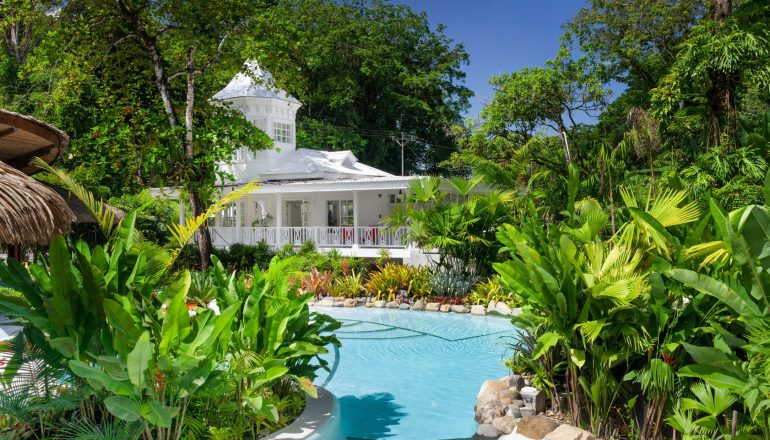
Hotel Aguas Claras

The Gilded Iguana

Boardwalk Boutique Hotel Aruba

Antara Luxury River Cruises
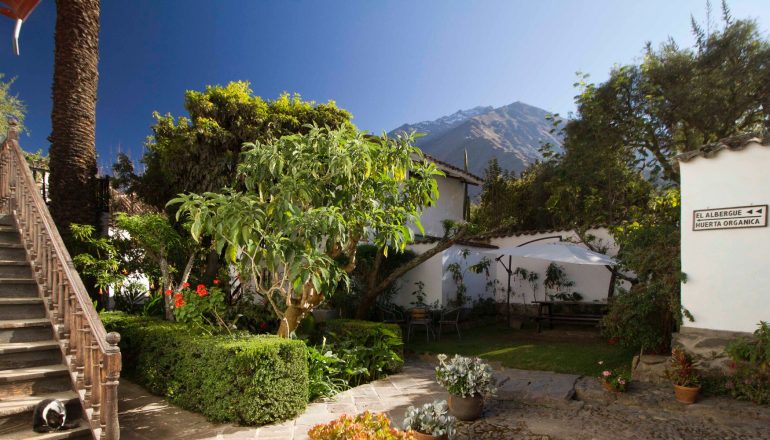
El Albergue Ollantaytambo
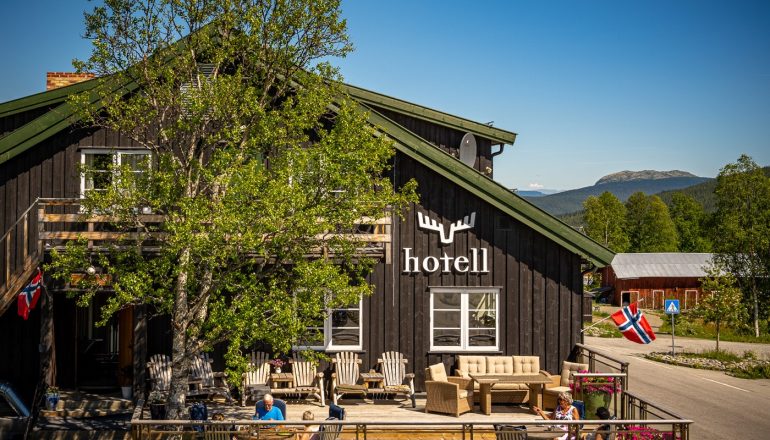
Skåbu Fjellhotell
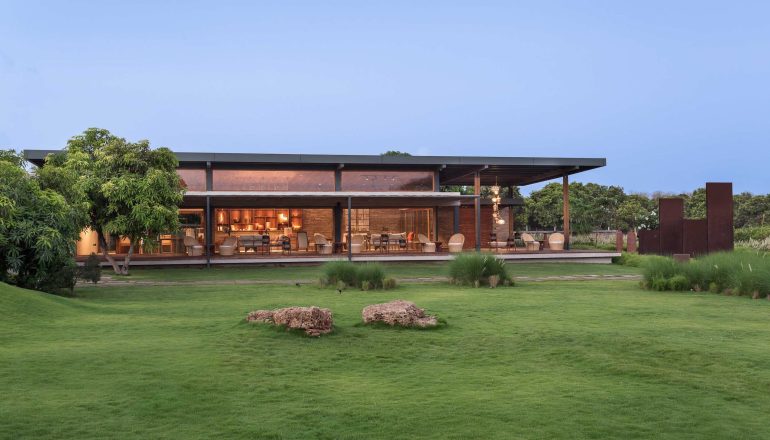
Woods At Sasan

Camp Denali
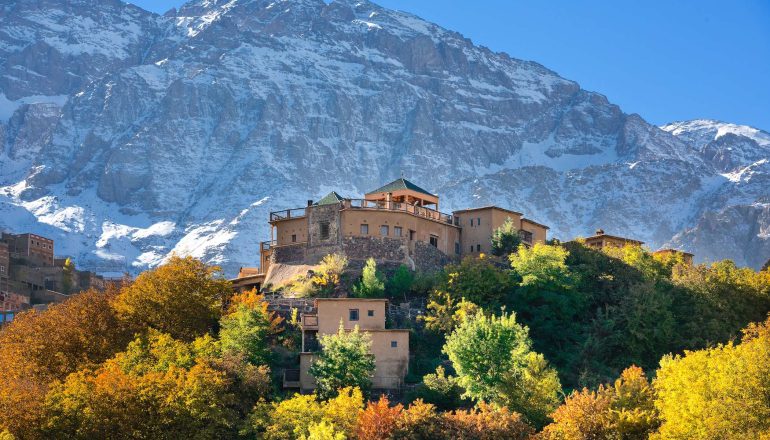
Kasbah du Toubkal
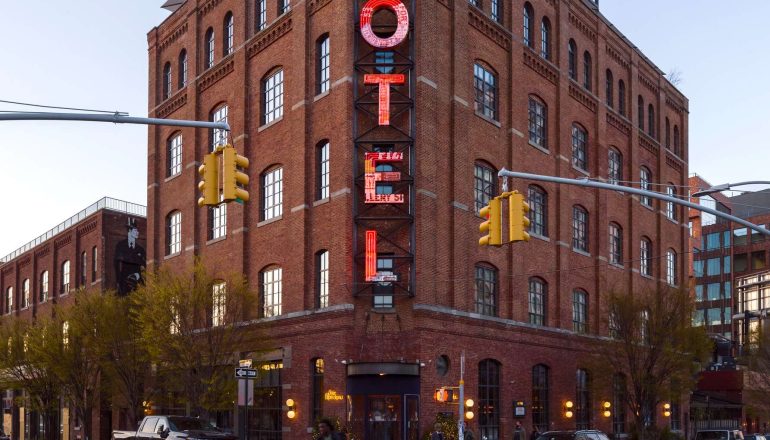
Wythe Hotel
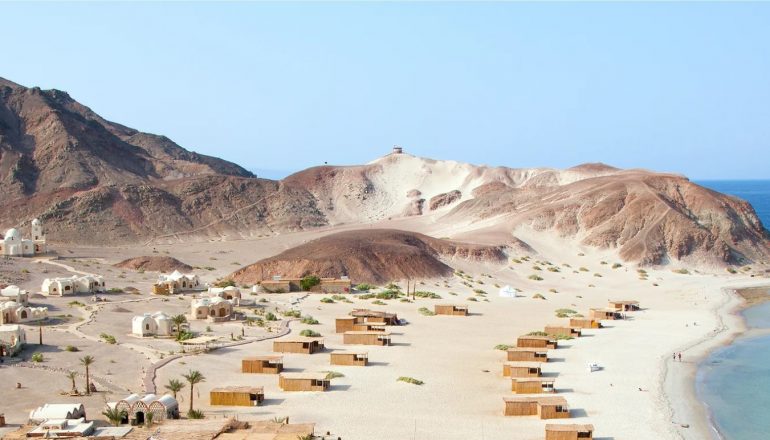
Basata Ecolodge
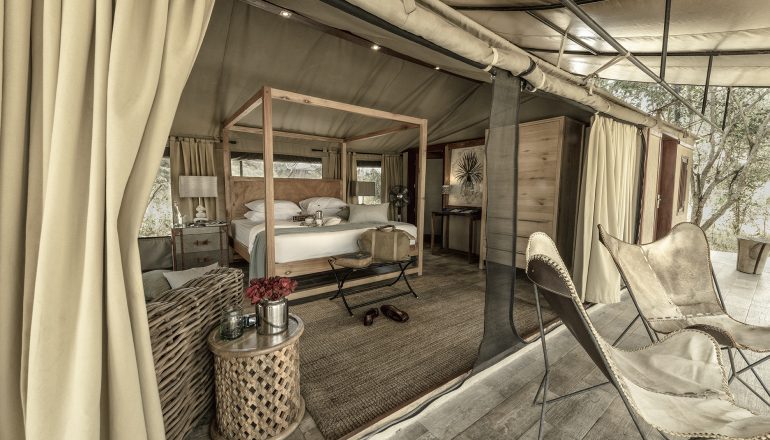
Nimali Tarangire
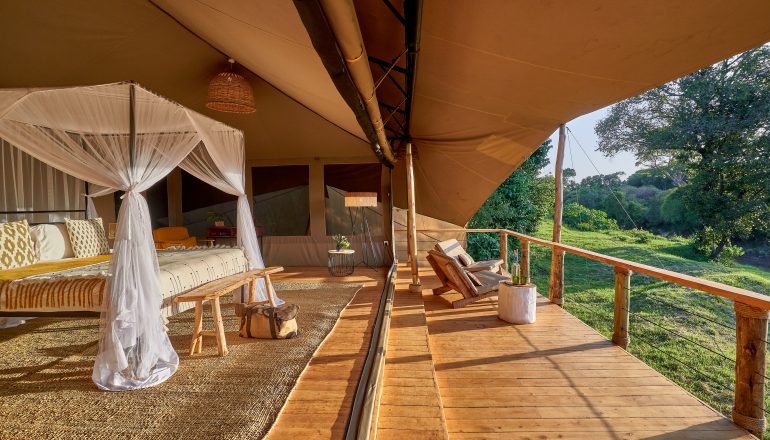
Emboo River

Ngalung Kalla

Andronis Concept Wellness Resort
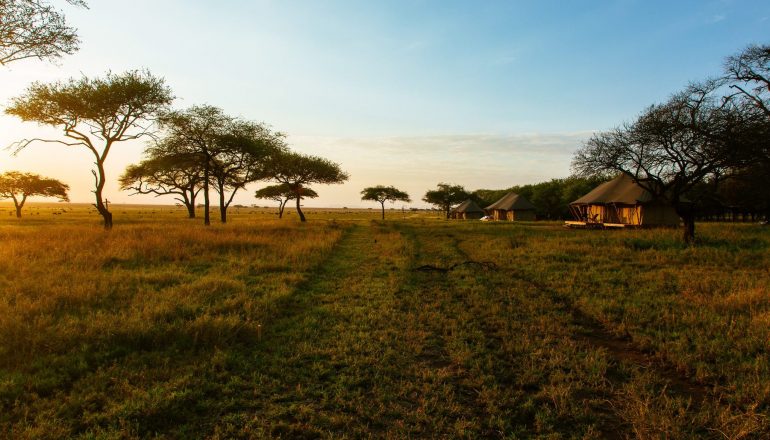
Cherero Camp
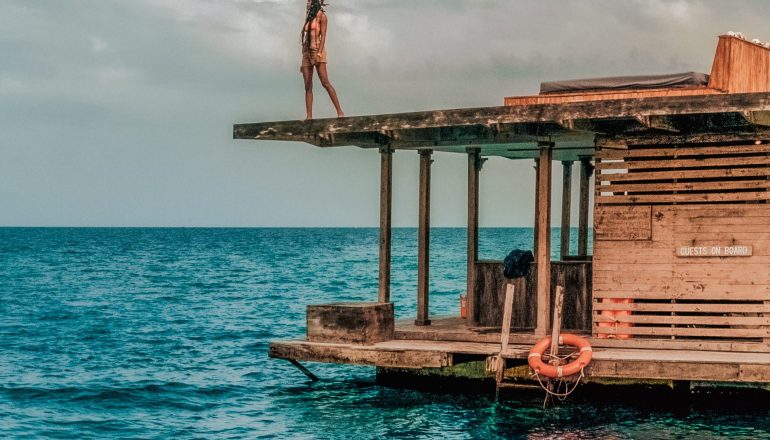
The Manta Resort
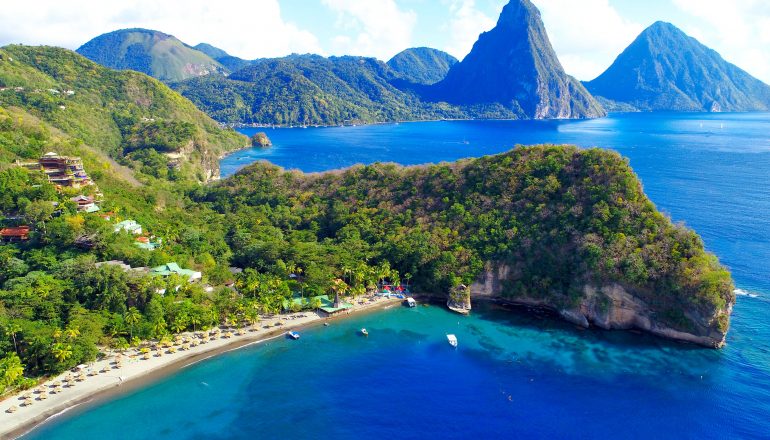
Jade Mountain

Matetsi Victoria Falls
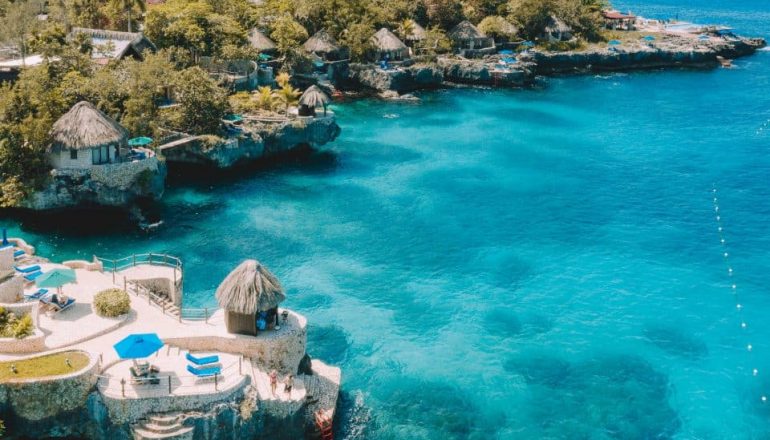
Rockhouse Hotel
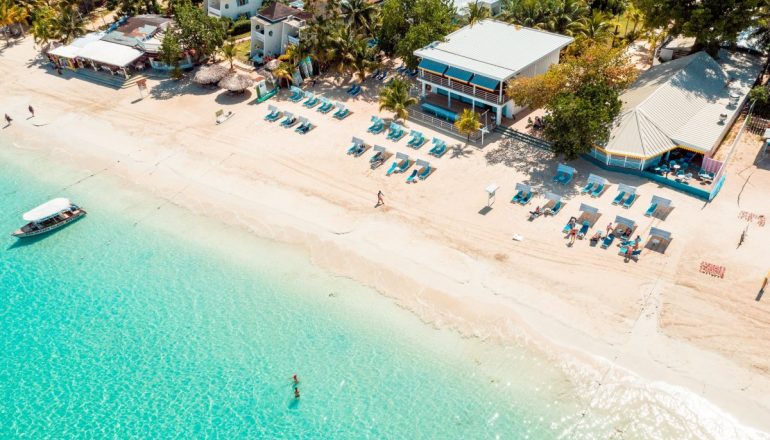
Skylark Negril
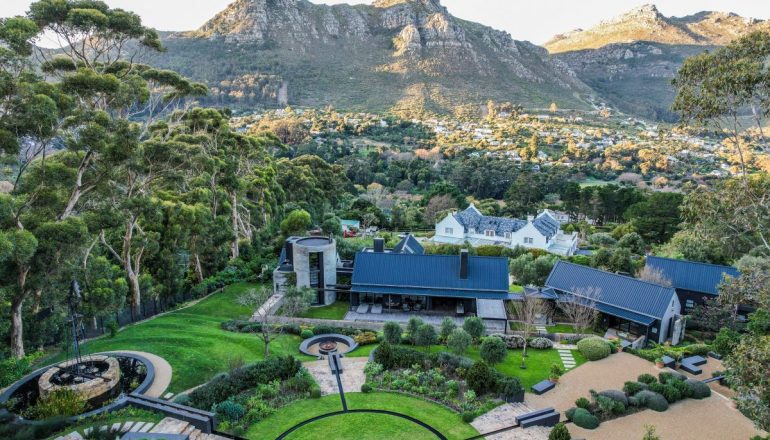
Future Found Sanctuary
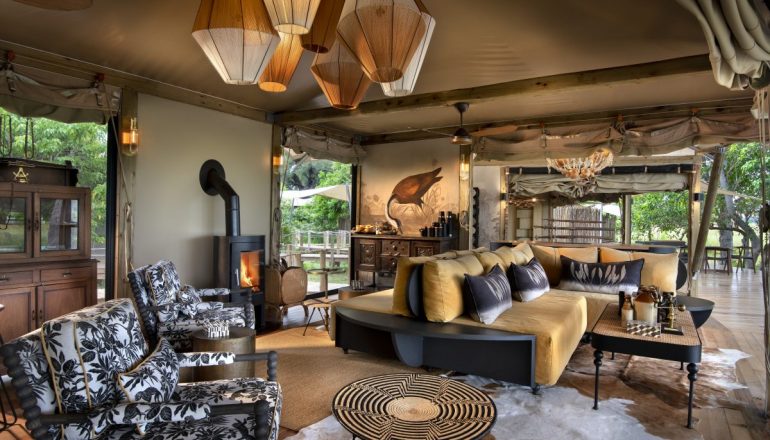
African Bush Camps – Khwai Leadwood

Tortuga Bay Puntacana Resort & Club
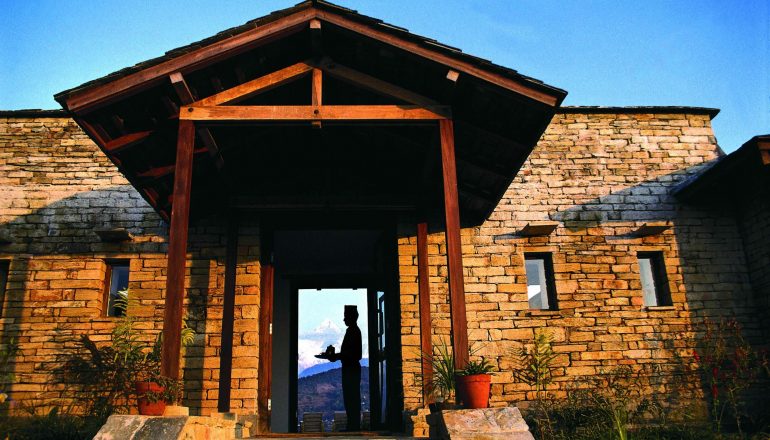
Tiger Mountain Pokhara Lodge
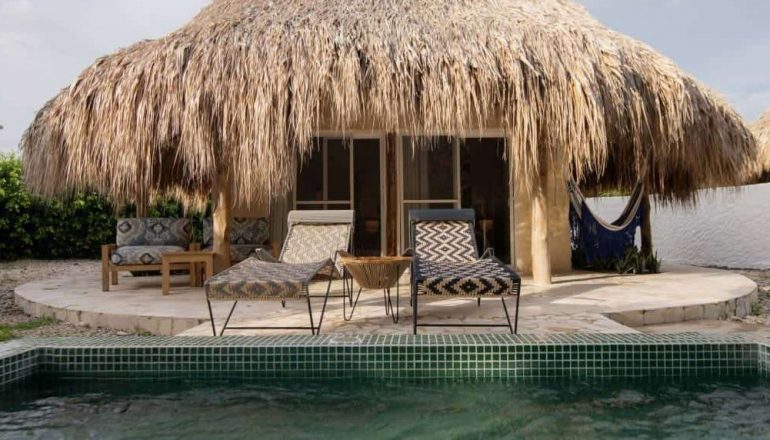
Blue Apple Beach
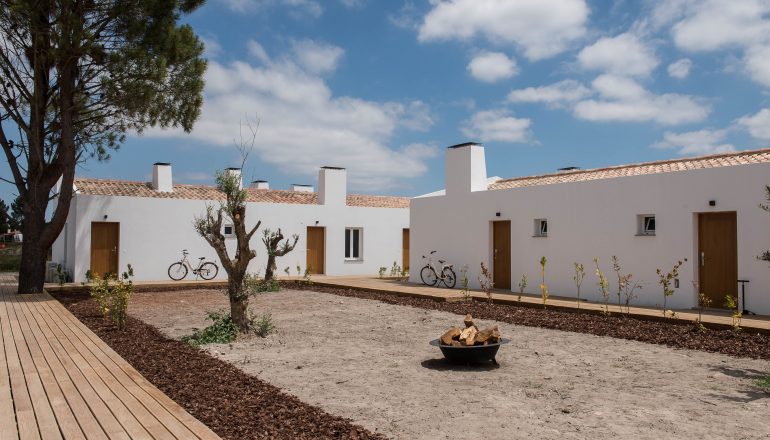
Craveiral Farmhouse
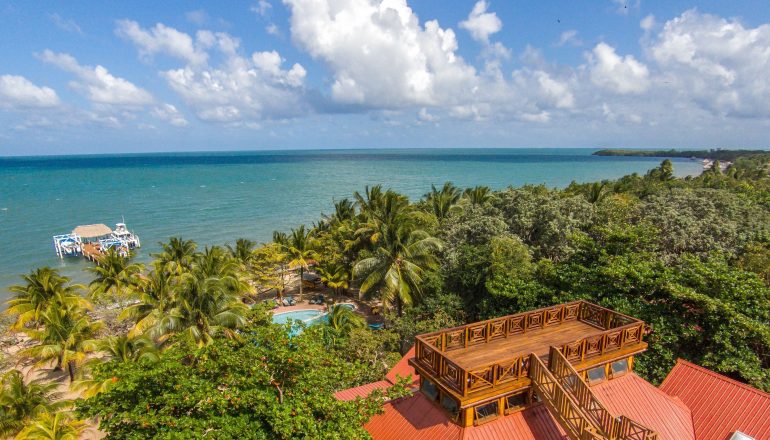
Hamanasi Resort
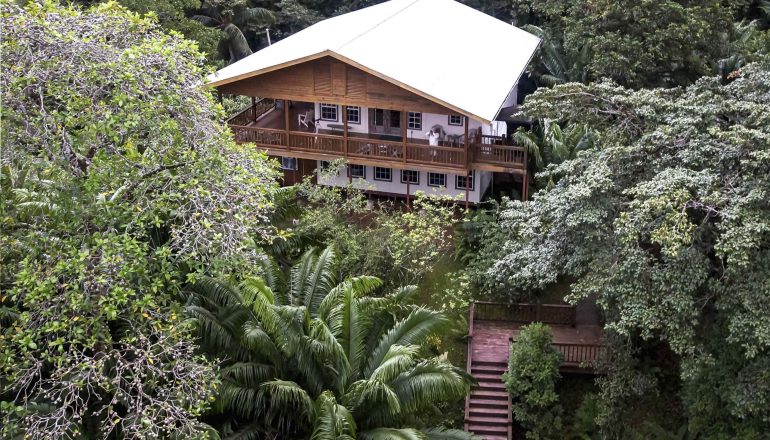
Tranquilo Bay
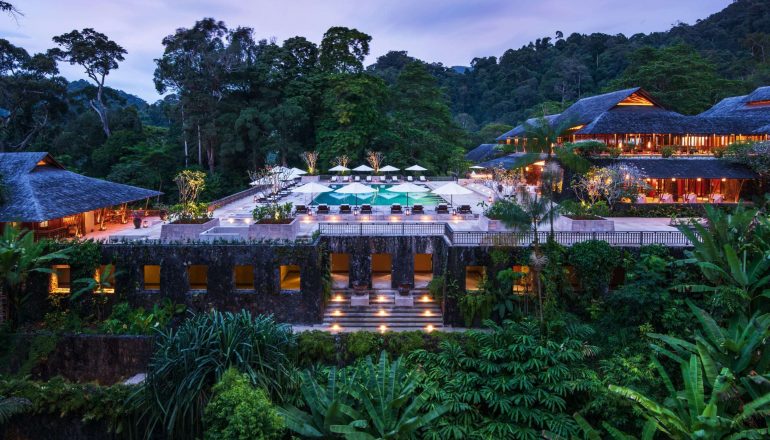
The Datai Langkawi

Fogo Island Inn
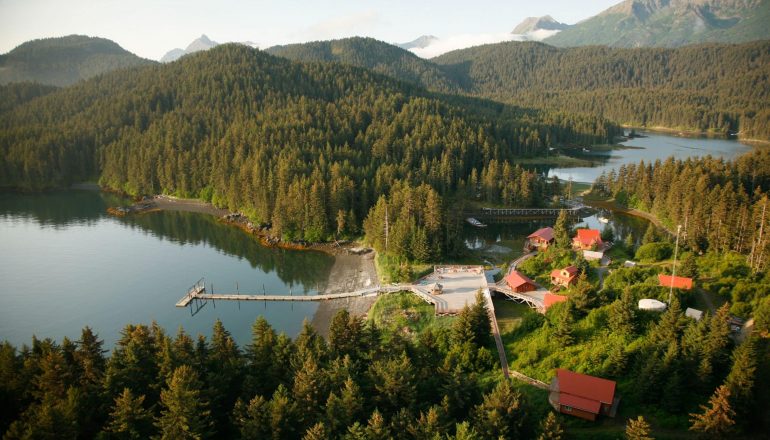
Within The Wild – Tutka Bay Lodge
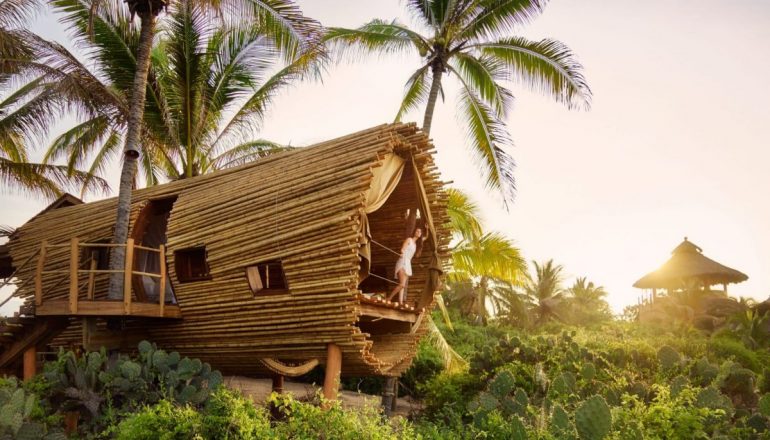
- [email protected]
Get the latest updates from our newsletter
Ⓒ 2023 Regenerative Travel, Inc. • All Rights Reserved
Privacy Policy

- Regenerative Hotels™
- Experiences
- Regenerative Travel Summit 2024
- Regenerative Retreat – Manta Resort
- Gastronomic Residency Portugal
- Virtual Trade Showcases
- Learning Series
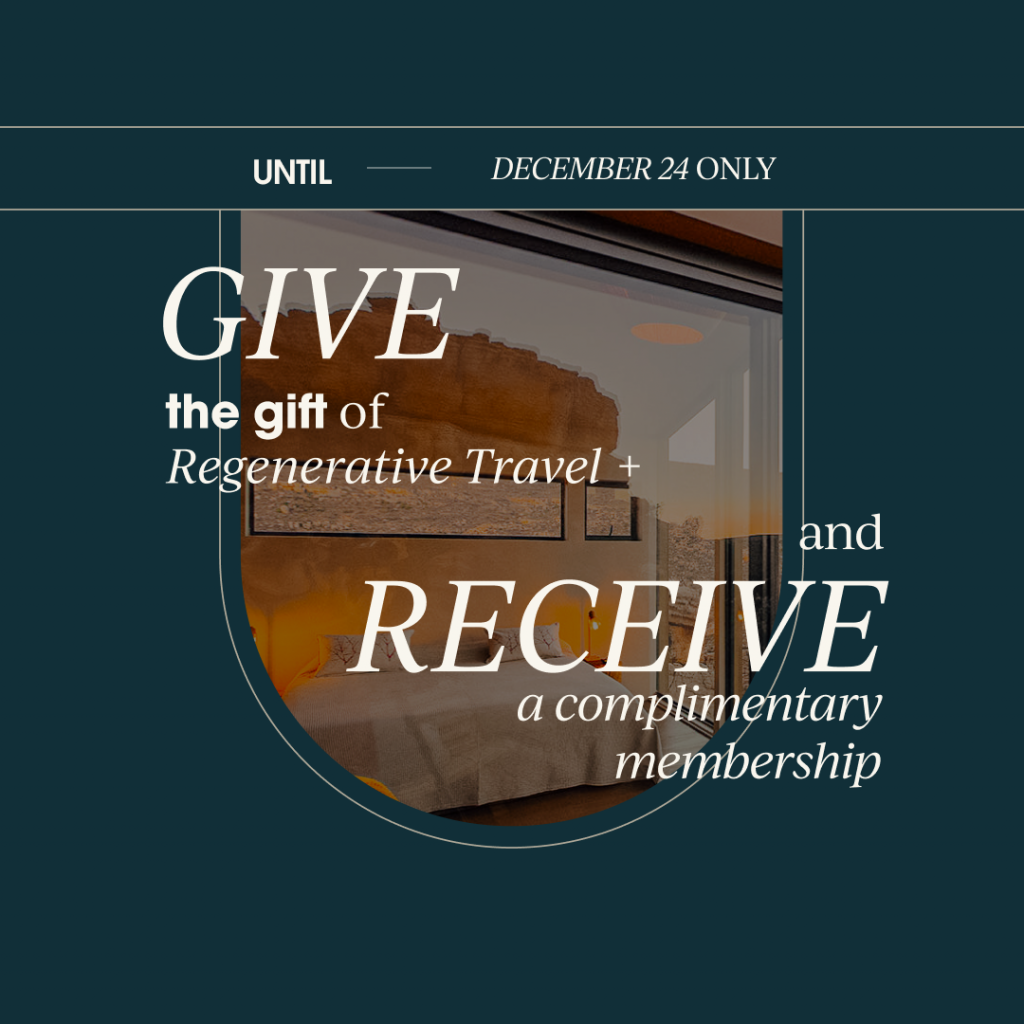
Cannes Lions
Small nation, big wins: 'palau pledge' tops cannes lions with 3 grand prix, campaign takes home a total of 7 awards.

ADWEEK will be all over Cannes. Subscribe to unlock unlimited access to all our coverage and analysis.
CANNES, France—Palau Pledge, the ambitious project dedicated to ensuring environmental stewardship for the small island nation of Palau, which had been tipped as one of the week’s top campaigns, took home two major Grand Prix awards at the Cannes Lions.
Winning the top honor in the Titanium and Sustainable Development Goals (SDG) Lions, the campaign created by Host/Havas in Sydney ended the week winning seven Lions, including a Grand Prix nod in the Direct category and a Gold Lion in Brand Experience & Activation.
The SDG Lion award is in its first year and, according to Terry Savage, chairman of the Cannes Lions, the festival received more than 900 entries. Proceeds from the entries for the SDG honor, in collaboration with United Nations (UN), are set to go to sustainable development causes in the coming months.
“You may think this is very un-Cannes-like,” quipped Savage. “But we really believe in this.”
Category jury president Mark Tutssel, global CCO of Leo Burnett and creative chairman of Publicis Communications, said that there was “one winner in this category, and that’s the human race,” noting that the UN’s 17 global sustainability goals are “must-fix” by 2030.
Creatively, Tutssel and his jury were looking to award work that has a lasting impact. A total of 29, with three gold Lions, were handed out.
“We were looking for acts, not ads,” said Tutssel. “We were looking for big and fresh ideas that wove their way into culture that changed behavior mindset and allow people to participate in an idea. [Palau Pledge] is so beautiful in its execution and concept—and rich in its potential.”
“When you look at the sustainable development goals, they are about people, planet, prosperity, peace and partnership,” added Maher Nasser, director of outreach for the UN’s Department of Public Information. “[Palau Pledge] brought all of the elements of what the global goals are about, and that’s the spirit.”
For her part, Colleen DeCourcy, CCO of Wieden + Kennedy and Titanium Lion jury president, addressed the campaign’s potential and its ability to scale, pointing out that its multiple touchpoints create lasting impact.
“A lot of the things that were awarded were really about scaling of ideas hand to hand, but when you look at taking a passport (part of the Palau Pledge program) and stamping it, that becomes embedded as part of your life experience,” she said. “You take it away with you—so anybody who’s ever visited Palau will carry this idea with them and the values that it represents. This is now how they think about sustainable tourism. So many of the ideas that are passed hand to hand right now are slightly dangerous and highly unsubstantiated. This felt like something where you take a piece of it away with you.”
The Titanium Lion is hotly contested, and the six additional Lions were awarded to Apple for “Today at Apple” (Apple); Procter & Gamble for the “It’s a Tide Ad” campaign (Saatchi & Saatchi); Tourism Australia for “Dundee: The Son of a Legend Returns Home” (Droga5); Essity for “Bloodnormal” (AMV BBDO) and Nike for “Nothing Beats a Londoner” (Wieden + Kennedy London).
“The Titanium Lion was created to honor work in any category that causes the industry to stop in its tracks and consider the way forward,” said DeCourcy. “As you can imagine, this was a hell of a year to take on that task—and, as one of our jury members said, ‘It’s what makes the show magical, irritating and confounding at the same time. [The winners] pulled the truth from all of them, and when you stop to think of what our industry can do, when you drop the shame of saying we work in advertising and say this is creativity, it helps change people’s minds and behavior in a world that’s full of rage, addiction and misinformation.”
Doug Zanger
Doug Zanger is Adweek's Agencies editor, focusing on creativity and agencies.


The paradise islands that don’t want bargain-hunting tourists
W hen I told friends I was visiting Palau , the most common response I received was: “Sounds lovely – but where is that exactly?” A lack of brand recognition isn’t usually something to strive for, but Palau doesn’t see it that way. As other countries around the world grapple with the impact of mass tourism, remaining under the radar is a key objective of this island nation.
Around 500 miles east of the Philippines and with flight connections to Manila, Hong Kong, Singapore, Seoul and Taipei, the Republic of Palau is home to just 18,000 people, making it the fourth smallest sovereign state on the planet, but comprises about 340 islands. Only nine are inhabited. Many of the others are entirely untouched and set in spectacular clusters of towering limestone and coated from shoreline to peak in ancient tropical forest.
In short, it’s paradise – and its government is determined to keep it that way. In 2020, the Palau National Marine Sanctuary was established, protecting 80 per cent of the country’s waters, covering an area larger than France. Since 2017, every tourist who enters has been obliged to sign the Palau Pledge , a commitment “to act in an ecologically and culturally responsible way on the island, for the sake of Palau’s children and future generations of Palauans.”
Which isn’t to say tourists are unwelcome. Palau still needs to consider economic necessities – especially when the country’s close relationship with the US means its citizens can easily study and settle there, an arrangement that has seen a brain drain unlikely to be stemmed by a forthcoming rise in Palau’s minimum wage to $4.25 (£3.30) per hour. However, it’s keen to bypass the high-impact, low-spending tourism model seen in places like Thailand, in favour of fewer big-spending luxury travellers.
It certainly isn’t the only country doing its best to deter backpackers in favour of the wealthy. During the pandemic, Fiji implemented the Blue Lanes initiative to attract superyacht-owning billionaires looking to rent out entire islands. In Bhutan, visitors are charged a sustainable development fee of $100 per day – putting it beyond the reach of any budget travellers. Palau’s strategy involves partnerships with upmarket airlines (don’t expect any Ryanair equivalents to be landing soon), substantial tourist taxes (more on which below) and a careful hotel development policy that focuses on high-end properties. It wants to become the next Seychelles or Maldives, not another Bali.
All of which makes the recent arrival of Four Seasons, the first international hospitality brand to establish a presence in Palau, entirely unsurprising. Launched in December, Four Seasons Explorer isn’t a hotel but a plush 39-metre catamaran that is now undertaking voyages around the sprawling island country. Its rolling cruises have no fixed departure dates, so incoming guests can arrive when they please and stay for as long as they want. After landing in Palau, a tender will ferry them to the larger vessel – wherever it might be. Once on board, they’ll enjoy a Palau experience without comparison in terms of service standards, cuisine, activities and overall extravagance. Passengers reside in one of 10 staterooms or the Grand Master Suite; mornings begin with yoga on the deck, and days are spent attending nature talks and cultural tours, kayaking, snorkelling and diving. It’s about as close as you’ll get to owning your own superyacht.
Four Seasons operates more than 100 properties around the world, but the concept is breaking new boundaries for the company and represents the first stage of a broader, long-term investment in the country. Construction of a Four Seasons resort on an uninhabited island near the capital, Ngerulmud, will begin shortly. Already it is offering training programmes for Palauans to learn the fine art of luxury hospitality, including placements at Four Seasons resorts in the Maldives. Another course involves teaching youngsters how to dive so they might become future scuba instructors.
I got a sense of the impact such commitments are having when I was picked up at the airport by Kaali, a Palauan woman in her early 20s who recently concluded her training in the Maldives and now looks after Four Seasons Explorer clients. Her role meant she wouldn’t need to consider emigrating and during our drives she proved a fascinating ambassador for the country. I learned about the Palauan language (ancient, unique and resilient, but newly vulnerable because children are increasingly enmeshed in English-language material online), funeral customs (locals consult a specific Facebook page to find out which ones to attend on any given weekend) and media (despite its tiny size, Palau has five radio stations).
Because Palau is so small, I was even able to meet the president. The son of a conservationist, diver and early tourism entrepreneur, Surangel S Whipps Jr is heavily invested in Palau’s current tourism strategy. He shared a story with me of how, in around 2015, when Palau received a record 170,000 tourists, mostly from China, locals poached hundreds of protected clams from a marine sanctuary to serve illegally in restaurants. “We wanted to discourage that kind of activity,” the president told me. It was incidents like this that precipitated an enhanced focus on environmental protections, including the establishment of the Palau Pledge and the introduction of new tourist taxes, including a $100 Pristine Paradise Environmental Fee, added to every airline ticket to fund conservation initiatives. To engage in water-based activities, tourists also need to purchase a 10-day permit costing between $50 and $100, with funds directed towards the Palau National Marine Sanctuary.
Such extra costs will deter many more price-conscious travellers from holidaying in the country (last year Palau welcomed just 35,000 visitors), but they’ll barely be noticed by the privileged guests booking a stay on Four Seasons Explorer. Though meals and most activities are included, a couple will pay around £2,850 a night – incredibly pricey, but as we sailed alone through pristine, primordial landscapes still completely untouched by man, I understood why Palau can command such a premium.
Sprouting from the water like mushroom caps, emerald islands were cloaked in bowed ferns and soaring breadfruit trees. Within the canopy we’d sometimes spot native Palau fruit doves, with their violet crowns and wings in vivid lime green. Occasional landings facilitated introductions to Palau’s culture and troubled history. At Airai, one of Palau’s 16 states, local women in colourful skirts woven from hibiscus bark performed ancient songs and dances. At Peleliu, rusted tanks and skeletal military ruins stood as relics of a Second World War confrontation between American and Japanese troops in which thousands perished. It was hard to fathom how something like this could occur in a place that now seemed so peaceful.
Most on board had come to Palau to take to the water. Palau’s reef is in robust good health and the country is renowned for offering some of the world’s best snorkelling and diving. Each evening, the avid divers among our group rhapsodised about encounters with manta rays and kaleidoscopic corals that were among the most vibrant they’d ever seen.
I was happy enough snorkelling. Alone in a sheltered cove one calm morning, I cut through waters so still and dazzlingly clear it somehow felt like I was flying through the air rather than swimming. Yellowed leaves from the trees above me spiralled slowly downwards towards a coral carpet that shimmered with iridescent flashes of amethysts, peppermints and tangerines. For all the bells and whistles the Four Seasons Explorer offered on board, it was having the opportunity to experience such beauty, hundreds of miles from anything resembling mass tourism, that felt like the ultimate luxury.
Stays on board Four Seasons Explorer Palau in the entry level State Room start from $3,696 (£2,861) per room per night, based on double occupancy. This includes diving, snorkelling, water sports and most activities and excursions but excludes alcoholic beverages. Flights extra.
Cookson Adventures can organise a seven-night adventure on Four Seasons Explorer Palau from $59,995 (£46,442) based on two sharing the Explorer Suite with private sundeck and business-class flights on China Airlines via Taipei. This includes diving, snorkelling, water sports and most activities and excursions, but excludes alcoholic beverages.
Sign up to the Front Page newsletter for free: Your essential guide to the day's agenda from The Telegraph - direct to your inbox seven days a week.


Exploring Palau: The Paradise for Sustainable Tourism
Hidden in the heart of the Pacific Ocean, Palau islands are the epitome of a picture perfect hidden gem waiting to be explored by the conscious traveler. With its turquoise waters, vibrant coral reefs, and lush landscapes, Palau offers a unique blend of natural beauty and cultural richness. But what truly sets this archipelago apart is its commitment to sustainable tourism. From the groundbreaking Palau Pledge to the vast marine sanctuaries, Palau is leading the way in preserving its pristine environment for future generations. Join us as we explore how this island paradise is making waves in sustainable tourism and learn how you can be part of this inspiring journey.
The Natural Beauty of Palau
Palau is home to some of the most diverse marine ecosystems in the world. The Palau National Marine Sanctuary, one of the largest protected areas on the planet, safeguards 80% of the country’s waters. This initiative ensures the conservation of countless marine species, from the smallest coral polyps to majestic sharks and manta rays.

One of Palau’s most iconic attractions is the Rock Islands Southern Lagoon, a UNESCO World Heritage site. This collection of limestone islands is surrounded by crystal-clear waters and vibrant coral reefs, offering a paradise for snorkelers and divers alike.

Palau has taken innovative steps to promote sustainable tourism. The Palau Pledge, introduced in 2017, requires all visitors to sign a promise, stamped in their passports, to act in an environmentally and culturally responsible manner during their stay. This unique initiative has garnered global attention and sets a new standard for sustainable tourism practices.
Many of Palau’s accommodations have also embraced eco-friendly practices. From solar-powered resorts to hotels that implement comprehensive waste reduction programs, visitors can enjoy their stay knowing they are supporting businesses that prioritize sustainability.

Conservation Efforts
In 2009, Palau made history by establishing the world’s first shark sanctuary, banning all commercial shark fishing in its waters. This bold move has helped protect the declining shark populations and maintain the health of marine ecosystems.
Local communities play a vital role in Palau’s conservation efforts. Many conservation projects are designed to involve and benefit the local population, ensuring that tourism supports both environmental and cultural preservation.
Activities for Eco-Tourists
Palau offers a wealth of activities for eco-conscious travelers. Diving and snorkeling are top attractions, with sites like Blue Corner, German Channel, and Jellyfish Lake providing unforgettable underwater experiences. Kayaking and paddleboarding around the Rock Islands allow visitors to explore the stunning landscape without harming the environment.

For those interested in cultural experiences, Palau offers tours that showcase traditional crafts, dances, and village life. Engaging with the local culture provides a deeper understanding of the island’s heritage and the importance of preserving it.

While Palau’s efforts in sustainable tourism are commendable, balancing tourism growth with environmental preservation remains a challenge. Continuous efforts are needed to educate both tourists and locals about sustainable practices and the importance of conservation.
Tips for Responsible Travel
To ensure that your visit to Palau is both enjoyable and responsible, consider the following tips:
- Follow the Palau Pledge and respect local customs and the environment.
- Choose eco-friendly accommodations and tour operators.
- Minimize waste by reducing plastic use and recycling.
- Stay informed about Palau’s ecosystems and support conservation efforts.
Palau is a shining example of how tourism and conservation can go hand in hand. By choosing to travel responsibly, visitors can enjoy the breathtaking beauty of this island paradise while contributing to its preservation. As you plan your visit to Palau, remember that your actions can make a difference in safeguarding this natural and cultural treasure for future generations.
Reach out to us on [email protected] and receive a quote from your travel companion (Tembo Voyages) , to Palau archipelago.
Recent Posts

Palau Campaign Stands Tough on Environment Despite Hit to Tourism
Raini Hamdi, Skift
January 4th, 2019 at 2:00 AM EST
The hugely celebrated campaign, Palau Pledge, has not brought in more arrivals to Palau, which is also being hit by a China ban. Nobody should expect it to. Here’s why.
Raini Hamdi
There is something sexy about the idea of a tiny nation standing up for itself. Palau, an archipelago in the western Pacific Ocean with a population of just over 22,000, did that twice in the last year.
First, it stood up to tourists, asking for, in not so many words, respect from them. The Palau Pledge campaign is the first in the world to ask visitors to sign a declaration in passports to protect its environment and culture for the next generation, a move that has since been followed by Hawaii and New Zealand.
It also stood up to China, which is said to ban tours to the island because it continues to maintain diplomatic ties with Taiwan.
China came from nowhere to elbow out Japan as Palau’s top market in fiscal year 2015 with over 90,000 Chinese tourists. Total arrivals shot to nearly 170,000 for the first time that year.
But by fiscal year 2018, Chinese arrivals stood at just over 50,000, forcing Palau Pacific Airways to suspend “indefinitely” last July its Hong Kong-Palau flights. In a statement to Congress, as reported by the local Island Times, the airline group said “the Chinese government made Palau an illegal tour destination possibly and most likely due to lack of diplomatic status.”
It added this was not a severe problem before 2017 but had become a “very serious problem with the Chinese government seemingly putting an effort to slow or stop tourists from going to Palau in 2017.”
Earlier, in May 2018, Delta Air Lines axed flights from Japan’s Narita to Palau, and Saipan, citing lower demand for Micronesia.
As a result, arrivals from all markets except Taiwan also dropped in fiscal year 2018, although not as drastically as the China decline. Total arrivals, just over 115,000, went back to 2013 levels.
Palau Pledge is inclusive
The reality of having around eight times more tourists than residents on an archipelago with the total area of 460 square kilometers weighed on the idea to launch the Palau Pledge campaign a year ago.
But co-founder of the Palau Legacy Project, Laura Clarke, stressed the pledge was not addressed to any nationality or designed to keep anyone out. “It is inclusive, warm and welcoming to all visitors to Palau,” she said.
It was also never its aim to increase — or decrease arrivals — but to be “preventative in nature,” Clarke told Skift.
“Palau has taken note of the degradation in other destinations and wanted to take preventative action to stop that happening in Palau. Pledge is just one of the many initiatives implemented by Palau to ensure that its incredible pristine paradise is protected for generations to come,” said Clarke.
She denounced as “false” reports of too many Chinese destroying Palau’s pristine state. A South China Morning Post article in 2015 on the “onslaught” of Chinese tourists quoted a taxi driver saying they wrecked corals and threw rubbish in the sea, and residents accusing Chinese tourists of being responsible for the deaths of some jellyfish in the Jellyfish Lake.
Jellyfish populations declined drastically in 2016, but this was due to a drought experienced throughout Palau that year, which might also account for the arrivals decline in subsequent years. But last month the Coral Reef Research Foundation declared the jellyfish populations were rebounding and there are now enough numbers to provide visitors with quality experience.
Huge impressions but no new visitations
As a marketing and PR campaign, the Palau Pledge was brilliant, winning over 70 international awards, comprising 16 Grand Prix’s, including the highly coveted D&AD Black Pencil, the Titanium Grand Prix at the Cannes Lions International Festival of Creativity, and the inaugural United Nations Sustainable Development Goals Grand Prix.
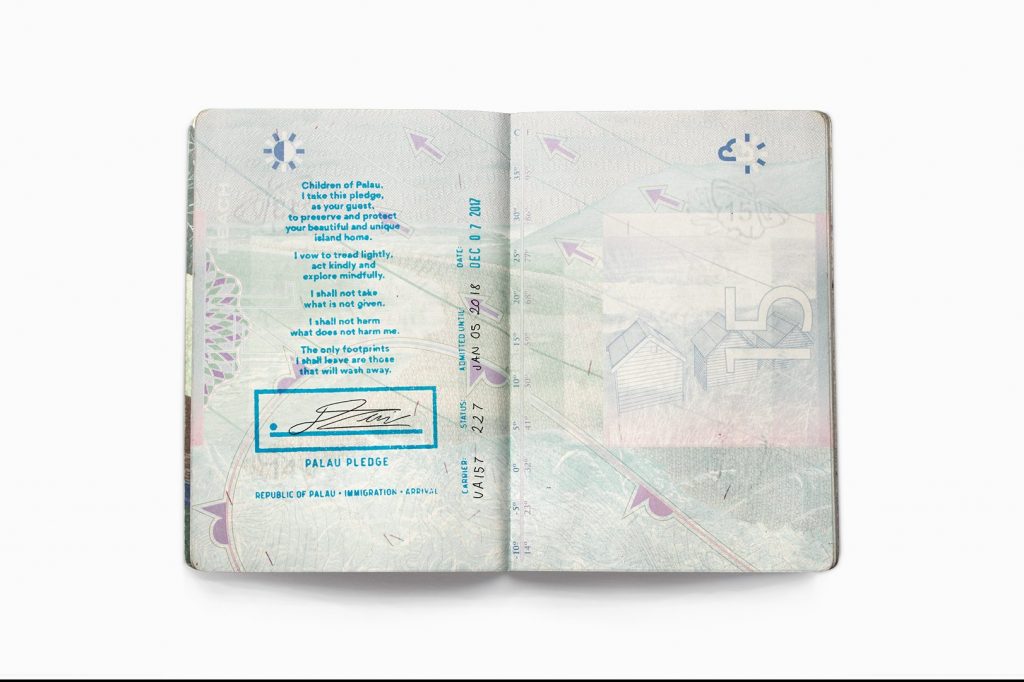
A passport stamped with the Palau Pledge
But despite drawing over two billion media impressions, according to a first anniversary statement last month, and signed by over 150,000 people including high-profile ones such as former U.S. Secretary of State John Kerry, Queen Noor of Jordan, Leonardo DiCaprio, and Richard Branson, the huge limelight worldwide has not translated into more arrivals or new markets for Palau, at a time when it most needs it.
But the managing director of a dive center and eco-adventure agency is happy with it. “The mix and number of visitors have gone back to the historical split and trend prior to the 2015 PRC market influx,” he told Skift.
“Palau always has attracted high value customers because it is primarily one of the best diving destinations in the world. It is going back to what it was before; high yield yet very environmentally conscious customers.”
But he too was quick to add, “It is not about any nationality. It is all about managing the sites. Pledge alone should not be the only solution, and the communities are now coming together to put additional plans [such as] Koror state tour guide licensing, business accreditation program and the new tourism policy that was recently passed.”
He’s referring to the government’s policy to go for high quality, low impact tourism.
Clarke meanwhile believes the pledge has had an impact in changing tourist behavior, although evidence is anecdotal.
“The psychology of signing an official document like a passport and having to sign an arrivals form that makes you opt into keeping the terms of the pledge is deep and cannot be underestimated. It’s far more than just marketing and PR,” she said.
The pledge tugs at the heartstrings, written by the children of Palau, according to its marketers, and addressed directly to them. It is stamped on passports for visitors to read and sign; anyone could also sign it on the website .
An inflight video is also screened for passengers, in which Palau children explain the impact visitors can have on their home. Signage and information packs are placed around Palau’s airport terminal and throughout the country to remind visitors about the conditions of the pledge once they arrive.
Added Clarke, “These things take time to measure properly — to definitively say what the impact of pledge has been on visitor behavior and the environment in under a year was never going to be possible. It’s complex and has never been done/measured before hence why we are now working with Host/Havas, Palau Bureau of Tourism and the United Nations World Tourism Organization to devise best practice measurements for the pledge and implement that.”
Phase two of Palau Pledge
Host/Havas is the Australian advertising and communications agency that created the campaign, which was the brainchild of Clarke and three other marketeers and Palau residents, Nanae Singeo, Jennifer Koskelin-Gibbons and Nicolle Fagan, under the voluntary Palau Legacy Project.
Aside from developing best practice measurements, phase two will see the launch of an accreditation program for businesses that act according to the pledge, giving them a marketing tool to help attract high-value, conscientious visitors. As well, developing the pledge adjunct to the educational curriculum for school-aged children.
The Australian and Italian governments, along with the Cannes Lion United Nations Sustainable Development Goals program, are backing phase two with grants, said Clarke.
Mario Hardy, CEO of the Pacific Asia Travel Association which counts Palau as a member, wished many countries would follow the Palau Pledge. “
It sends a clear message to visitors and those thinking of visiting. You come to our Islands and you will be welcome as long as you respect us. A clear message that quality tourist is better than masses,” he said.
“If the islands of Palau are being respected by the visitors, it should be felt by its people and the environment and therefore can be easily witnessed and measured by its people,” he said.
And that, is probably the best measurement of the effectiveness of the pledge, not the standard yardsticks of tourism arrivals and dollars.
The Daily Newsletter
Our daily coverage of the global travel industry. Written by editors and analysts from across Skift’s brands.
Have a confidential tip for Skift? Get in touch
Tags: conservation , marketing
Photo credit: A series of rock islands in Palau. Travelinsider / VisualHunt
We’re sorry, this site is currently experiencing technical difficulties. Please try again in a few moments. Exception: request blocked

IMAGES
COMMENTS
The Palau Pledge has become a trailblazing model of eco-conscious tourism. The Palau National Marine Sanctuary is critical to Palau's future The reserve stretches more than half a million square kilometres and protects the archipelago from commercial fishing and oil drilling.
The Palau Pledge is a response to the urgent need for eco-responsible tourism. The tourism industry is responsible for approximately 8% of global greenhouse gas emissions, surpassing even the construction sector. With the rise in global travel and consumption, it's vital to adopt strict regulations to mitigate the environmental impact.
The Palau Pledge started a global conversation and movement towards conscious tourism. To date, the Pledge has been signed by hundreds of thousands of visitors. Who has endorsed the Palau Pledge? Palau has been backed by activists, politicians, business leaders and even royalty. Some of our supporters include John Kerry, Queen Noor of Jordan ...
Palau Becomes First Country to Require 'Eco-Pledge' Upon Arrival. As tourism to this island nation increases, the government has instituted a mandatory pledge for tourists—in the form of a ...
Be seen and promoted. Palau Business Pledge certification means your business will be promoted by the Palau Pledge media platform and our tourism industry partners. Your logo and a link to your website will be included in all relevant Palau Pledge and tourism promotional materials. 06.
The pledge is one of a number of incentives to make Palau the first carbon neutral tourist destination in the world. Arrivals to Palau will now have this pledge stamped in their passport which ...
This pledge is now a way from Palau to present the world, how they are dealing with environmental issues, over tourism and sustainability. "It is our responsibility to show our guests how to respect our island home, just as it is their duty to uphold the signed pledge when visiting", stated the President of Palau, Tommy Remengesau.
Upon Arrival, All Visitors Must Sign the Palau Pledge, which is stamped into their passports. PUBLIC NOTICE: Palau Pristine Paradise Environmental Fee (PPEF) In accordance with RPPL No. 10-16, effective January 1, 2018, the PPEF of One Hundred Dollars ($100 USD) shall be included in the price of every international airline ticket into the Republic of Palau.
The Palau Pledge is a short passport-like declaration that visitors have to sign before being allowed to access the island, in order to formally commit themselves to adopt behaviours respectful of the ecological and cultural traits of the country during the whole permanence on Palau's territory. Therefore, every single tourist needs to assume ...
To promote sustainable tourism, the island of Palau has a new visa mandate: all tourists must sign a pledge in their passports to preserve nature What unsustainable behavior needs to change : Palau, a Polynesian island nation, faces a critical challenge rooted in its heavy reliance on tourism (85% of its GDP, pre-COVID).
The island nation of Palau has taken a bold step in a new direction towards conservation: requiring every incoming visitor to sign a stamped pledge in their ...
The Icelandic Pledge, created by Visit Iceland in the summer of 2017, kicked off the pledge movement, closely followed by the Palau Pledge later that year. Then came New Zealand's Tiaki Promise in 2018 and the Sustainable Finland Pledge in 2019. Upon entry to Palau, visitors must sign a passport pledge. Image credit: Palau Bureau of Tourism
And then there is the Palau Pledge. Introduced in 2017, the law requires all visitors to make an environmental promise to Palau's children that is stamped into their passports on arrival. In ...
Like many other island nations in the Pacific, Palau relies on tourism as a primary driver of its economy. Each year, throngs of tourists come from all over the world to explore Palau. ... Today, many locals feel that the Palau Pledge is a small but significant step towards shifting tourists' attitudes about the value of the country's ...
The stamped pledge filled a page in each tourist's passport and was delivered in the form of a short poem written by Palau children - a poignant, neat reminder to be a good tourist whenever a visitor flicked through their passport. And so Palau became the first country worldwide that only issues visas to tourists who sign an eco-pledge.
The Palau Pledge Campaign vision. Through mutual connections, the Palau Legacy Project reached Host/Havas, the Sydney branch of the multinational ad group of Red Havas, to seek help with the campaign (Green, 2019).Seamus Higgins, Executive Creative Director of the agency, explained that the brief explained how the island had 'a huge influx of tourists since 2015, but they did not have the ...
Laura Clarke, one of the four co-founders of the Palau Legacy Project, which commissioned the pledge along with media from Australian company HostHavas, said, 'the Palau Pledge is about helping guests understand the vital role they play in protecting Palau for the next generation.Most visitors are unaware of the serious impact their actions have or even what they can do to help.
The eco pledge concept is definitely something that other countries should experiment with, but in order to really have an impact, an entire program framework should be put behind it. ... factor that plays into Palau's carbon neutral status is the actual emissions reductions that are achieved by the tourism industry. Palau has very ambitious ...
The ambitious Palau Pledge campaign wins big, netting 3 Grand Prix and 7 total Cannes Lions. ... This is now how they think about sustainable tourism. So many of the ideas that are passed hand to ...
Since 2017, every tourist who enters has been obliged to sign the Palau Pledge, a commitment "to act in an ecologically and culturally responsible way on the island, for the sake of Palau's ...
The Palau Pledge, introduced in 2017, requires all visitors to sign a promise, stamped in their passports, to act in an environmentally and culturally responsible manner during their stay. This unique initiative has garnered global attention and sets a new standard for sustainable tourism practices.
Mario Hardy, CEO of the Pacific Asia Travel Association which counts Palau as a member, wished many countries would follow the Palau Pledge. It sends a clear message to visitors and those thinking ...
International tourism had more than tripled since 2000, and many of the visitors were first-timers who were unfamiliar with the rugged Icelandic landscape. ... One exception is the Palau Pledge ...
The Republic of Palau is a small island nation of about 350 islands in the western Pacific Ocean, with an estimated population of about 18,000 people. ... people. The government is the country's largest employer, with approximately 30 percent of the workforce, and the tourism sector was Palau's biggest economic driver, contributing an ...